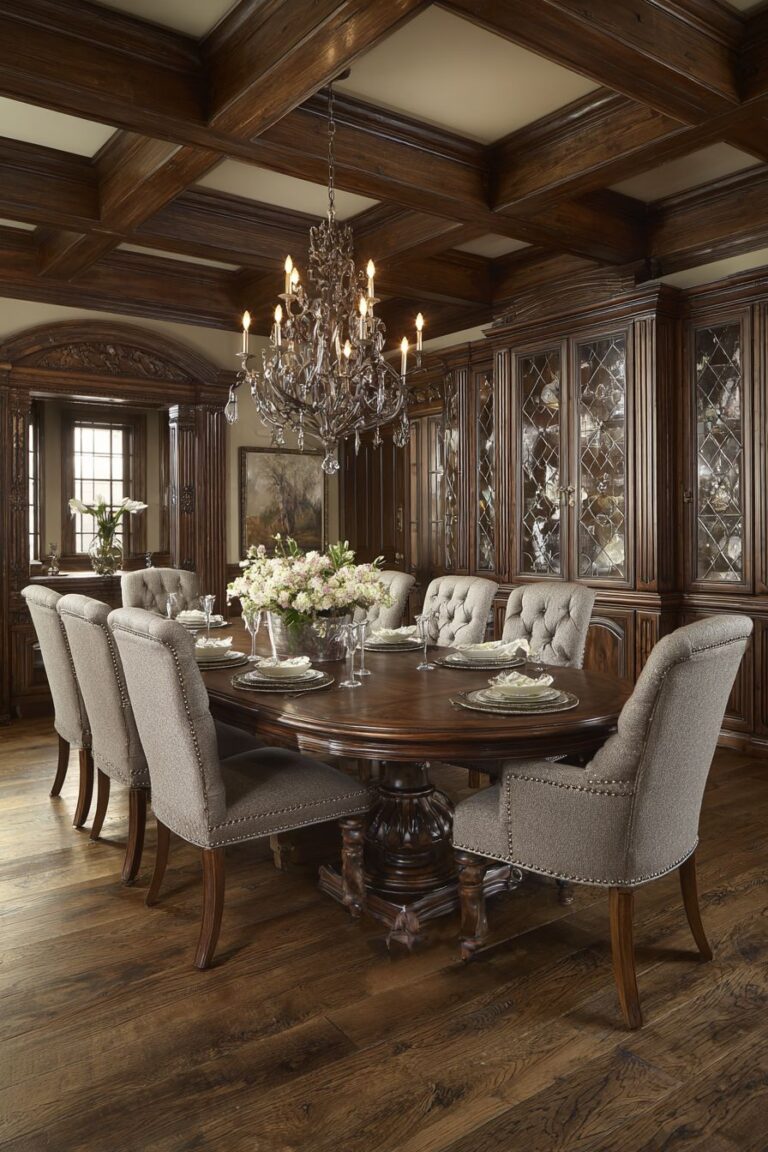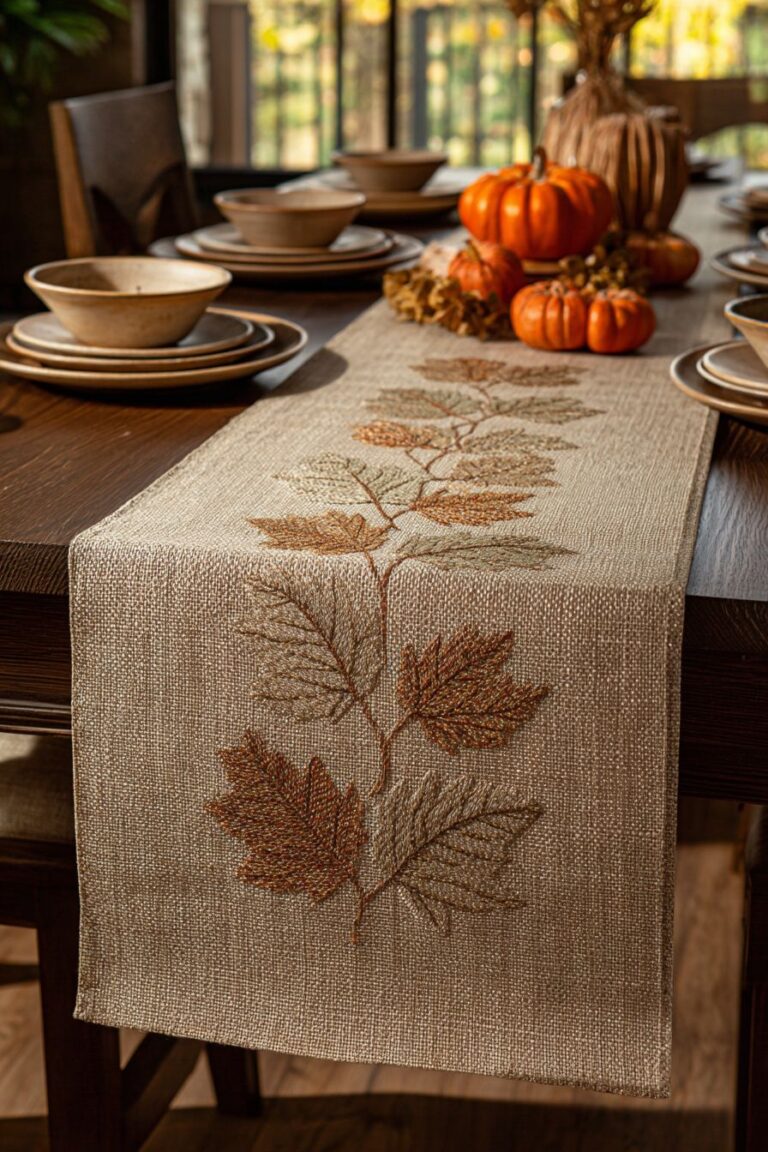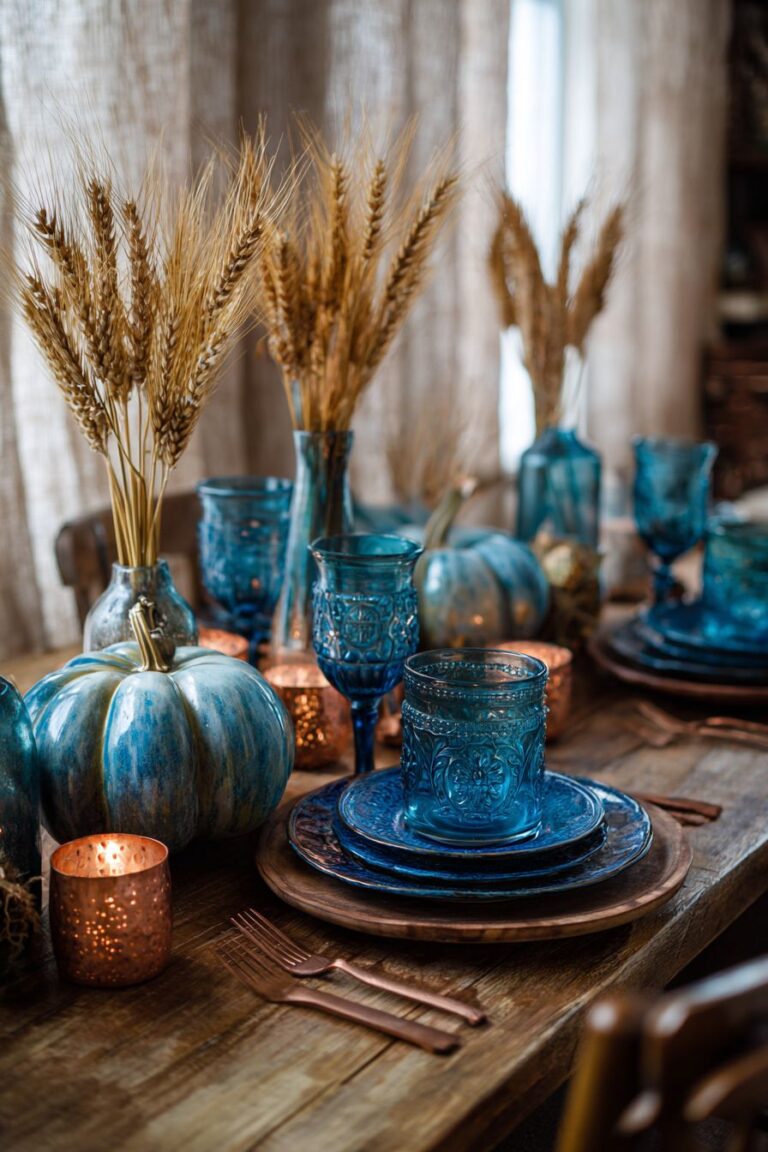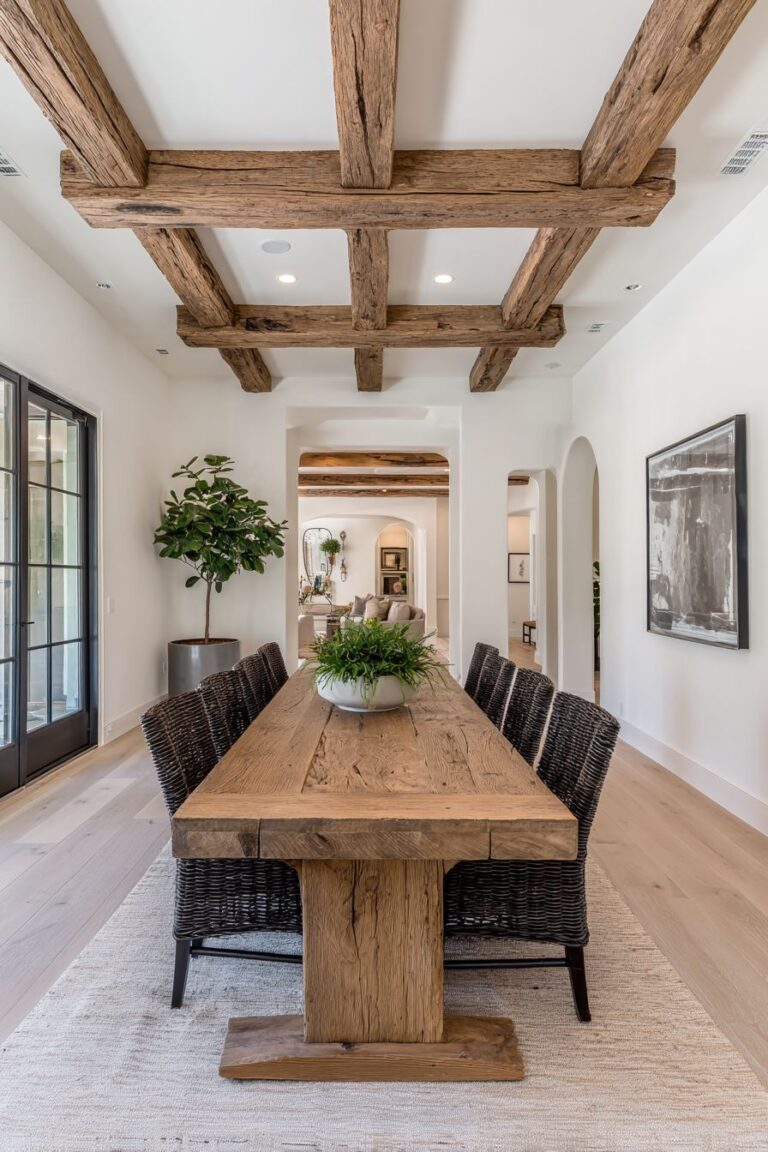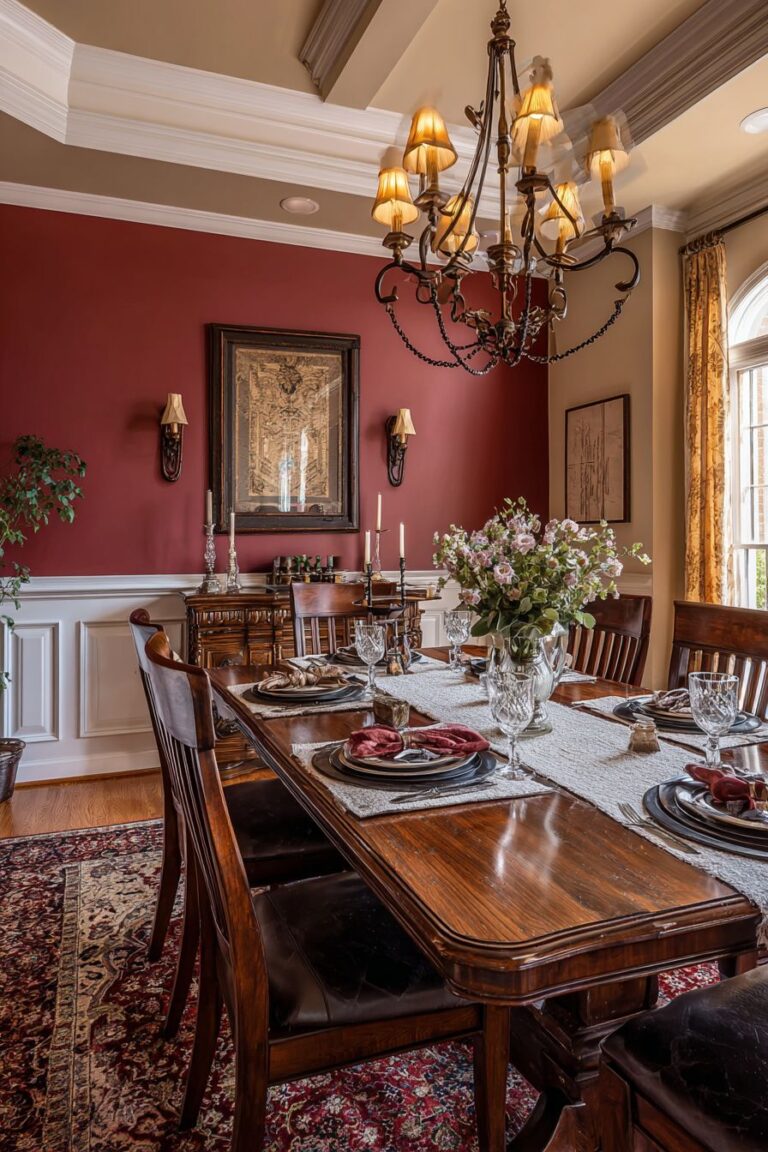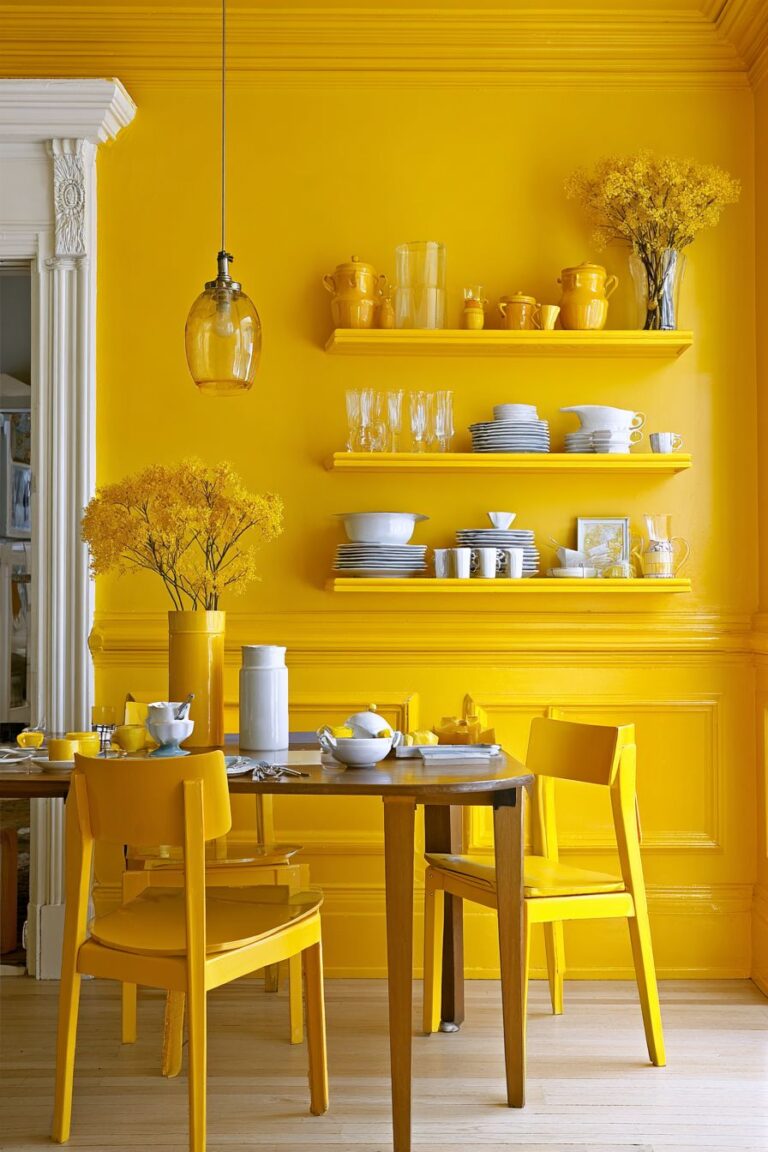20 Traditional Dining Room Ideas: Design for Elegant Entertaining Spaces
The dining room stands as the heart of hospitality in any home, serving as a gathering place where families create lasting memories and friends share meaningful conversations over carefully prepared meals. In our fast-paced digital age, the traditional dining room represents a return to timeless elegance, offering a sanctuary where classic design principles meet functional comfort. These spaces embody the art of gracious living, combining rich materials, sophisticated color palettes, and carefully curated furnishings that speak to generations of refined taste and enduring style.
Traditional dining room design draws inspiration from various historical periods, from colonial American craftsmanship to European influences, each bringing its own distinctive character while maintaining the core principles of balance, proportion, and quality. Whether featuring the warm patina of aged wood, the lustrous gleam of crystal chandeliers, or the soft texture of fine fabrics, these spaces create an atmosphere that elevates everyday dining into special occasions. The beauty of traditional design lies in its ability to remain relevant across decades, offering both comfort and sophistication that never goes out of style.
This comprehensive exploration presents twenty distinct traditional dining room concepts, each showcasing unique approaches to creating spaces that honor classic design principles while meeting contemporary lifestyle needs. From formal entertaining spaces featuring museum-quality antiques to cozy family gathering areas with rustic charm, these designs demonstrate the versatility and enduring appeal of traditional interior design, offering inspiration for homeowners seeking to create their own timeless dining sanctuaries.
1. Mahogany Elegance with Queen Anne Sophistication
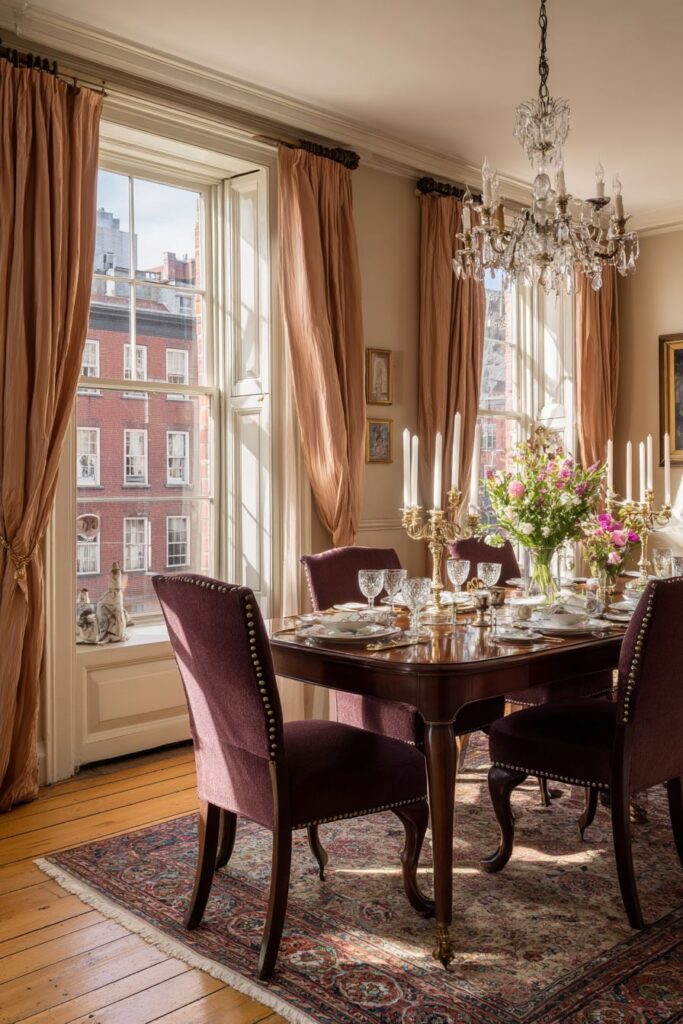
Step into a world of refined luxury where a magnificent mahogany dining table commands attention with its graceful Queen Anne legs, each curve telling a story of masterful craftsmanship and timeless design. The rich, chocolate-brown wood grain creates a stunning foundation for formal entertaining, while the table’s generous proportions provide ample space for elaborate place settings and elegant serving pieces. Surrounding this centerpiece, upholstered chairs in deep burgundy velvet add layers of warmth and texture, their brass nailhead trim catching the light and creating subtle sparkle throughout the room.
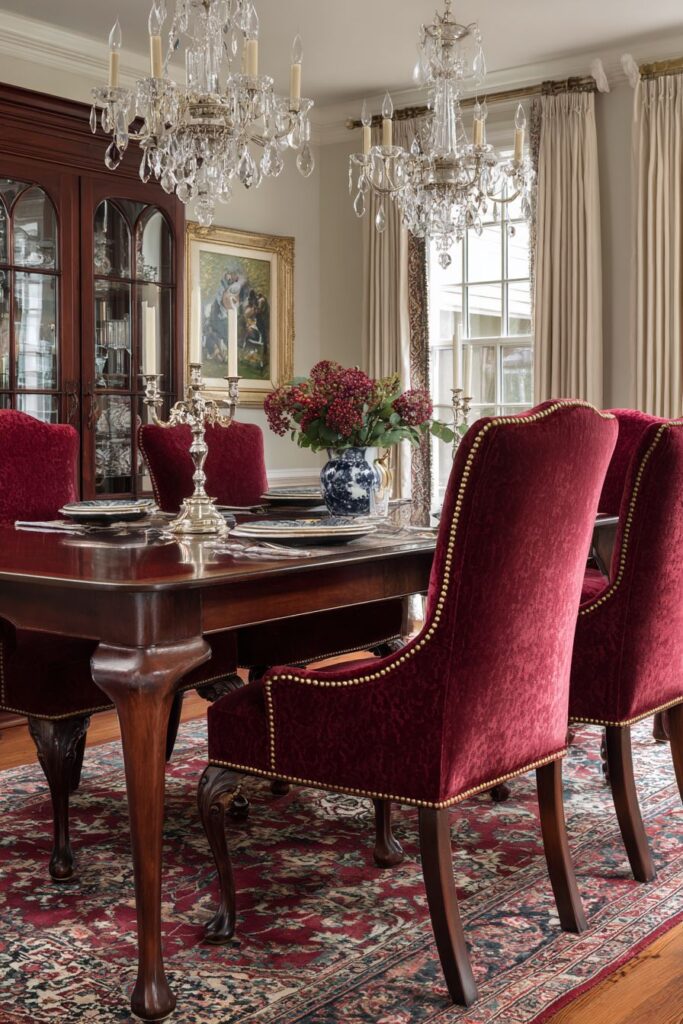
The crystal chandelier suspended above serves as both illumination and artwork, its faceted surfaces casting dancing rainbows across the polished tabletop and fine china place settings. This lighting fixture represents the pinnacle of traditional dining room luxury, providing warm, ambient light that enhances the intimate atmosphere essential for memorable dining experiences. Silver candelabras strategically placed along the table add additional pools of flickering light, creating depth and romance that electric lighting alone cannot achieve.
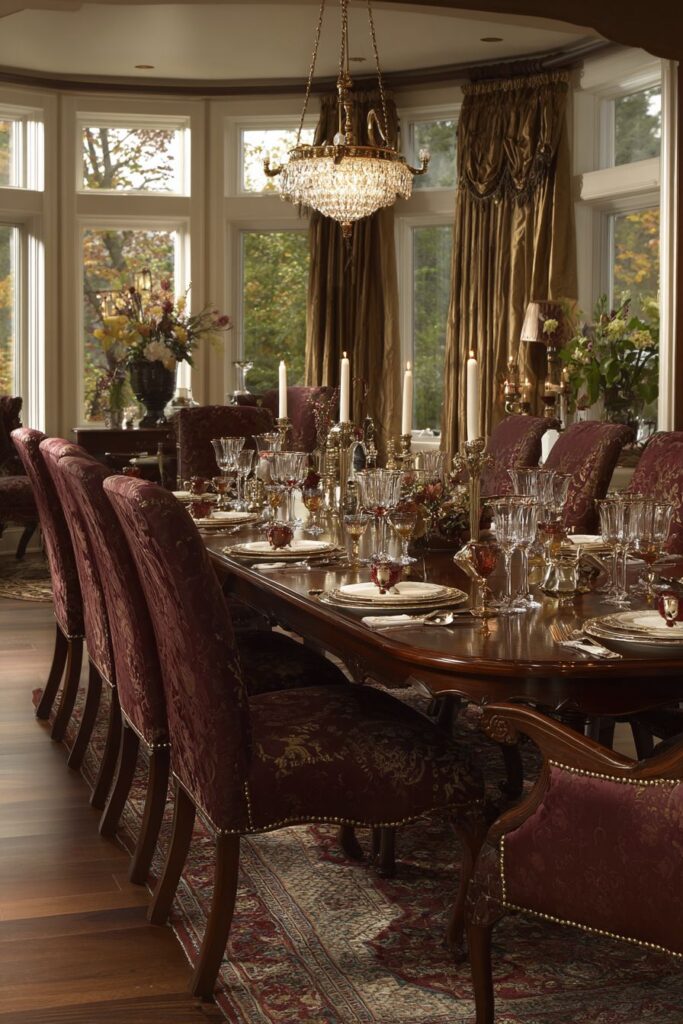
Rich hardwood floors provide a solid foundation for the room’s grandeur, their deep patina reflecting years of careful maintenance and adding to the space’s authentic character. The Persian rug anchoring the seating area introduces jewel tones that complement the burgundy upholstery while adding pattern and visual interest beneath the table. Professional interior photography captures every detail through carefully controlled natural lighting streaming through tall windows, draped in luxurious silk curtains that frame the exterior view while maintaining the room’s formal atmosphere.
The overall composition speaks to the timeless appeal of traditional design, where every element works in harmony to create spaces that feel both grand and welcoming. This approach to dining room design emphasizes quality over quantity, investing in pieces that will remain beautiful and functional for generations while creating an environment that makes every meal feel like a special occasion.
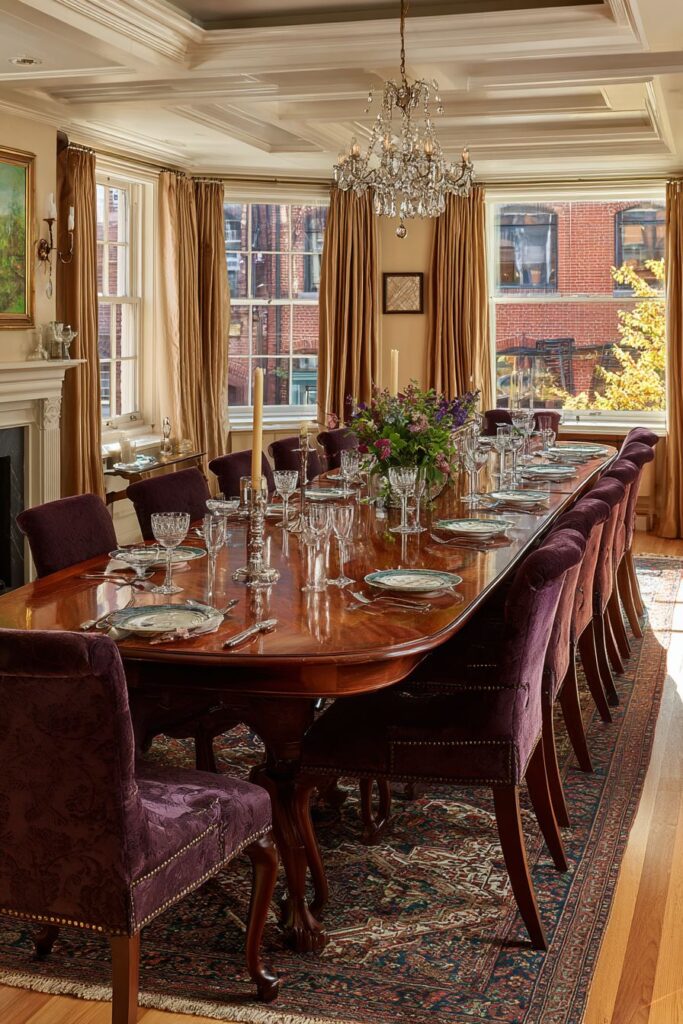
Key Design Tips:
- Select mahogany furniture with hand-carved details for authentic traditional appeal
- Layer lighting sources including chandeliers, candles, and natural light for optimal ambiance
- Choose deep, rich colors like burgundy and gold to create warmth and sophistication
- Invest in quality Persian or Oriental rugs to anchor the space and add pattern
- Use brass accents sparingly but consistently throughout the room for cohesive metallic touches
2. Built-In China Cabinet Display Excellence

The built-in china cabinet stands as a testament to both storage functionality and display artistry, featuring glass doors that showcase treasured collections of fine porcelain and crystal stemware with museum-quality presentation. The cabinet’s raised panel woodwork demonstrates traditional craftsmanship at its finest, with warm cherry finish and brass hardware creating a cohesive look that speaks to quality and attention to detail. Each shelf becomes a carefully curated vignette, displaying pieces that represent family heritage and personal taste while maintaining the visual balance essential to traditional design.

Adjacent to this storage masterpiece, the formal dining area continues the theme of refined elegance with a beautifully appointed table set for entertaining. Crisp white linens provide a clean, classic foundation that allows the room’s richer elements to shine, while silver serving pieces add lustrous accents that catch and reflect the ambient lighting. The wide-angle photography captures both the practical storage solutions and the aesthetic beauty of well-organized collections, demonstrating how traditional design successfully marries form with function.

The craftsmanship details become focal points in their own right, from the precise joinery of the cabinet doors to the subtle variations in the wood grain that speak to the natural beauty of quality materials. Traditional proportions ensure that the built-in storage doesn’t overwhelm the space but rather integrates seamlessly with the room’s architecture, creating the illusion that these elements have always been part of the home’s original design.
This approach to dining room storage reflects the traditional principle of creating beautiful solutions to practical needs, where everyday items become part of the room’s decorative scheme. The transparency of the glass doors allows cherished pieces to remain visible and appreciated even when not in use, while protecting them from dust and damage that open shelving might allow.

Key Design Tips:
- Install glass-front cabinets to display collections while keeping items dust-free
- Use consistent hardware finishes throughout built-ins for cohesive appearance
- Arrange displayed items by color, size, or theme for visual harmony
- Include interior cabinet lighting to highlight special pieces and create ambiance
- Choose raised panel construction for authentic traditional cabinet styling
3. Walnut Wood American Traditional Comfort
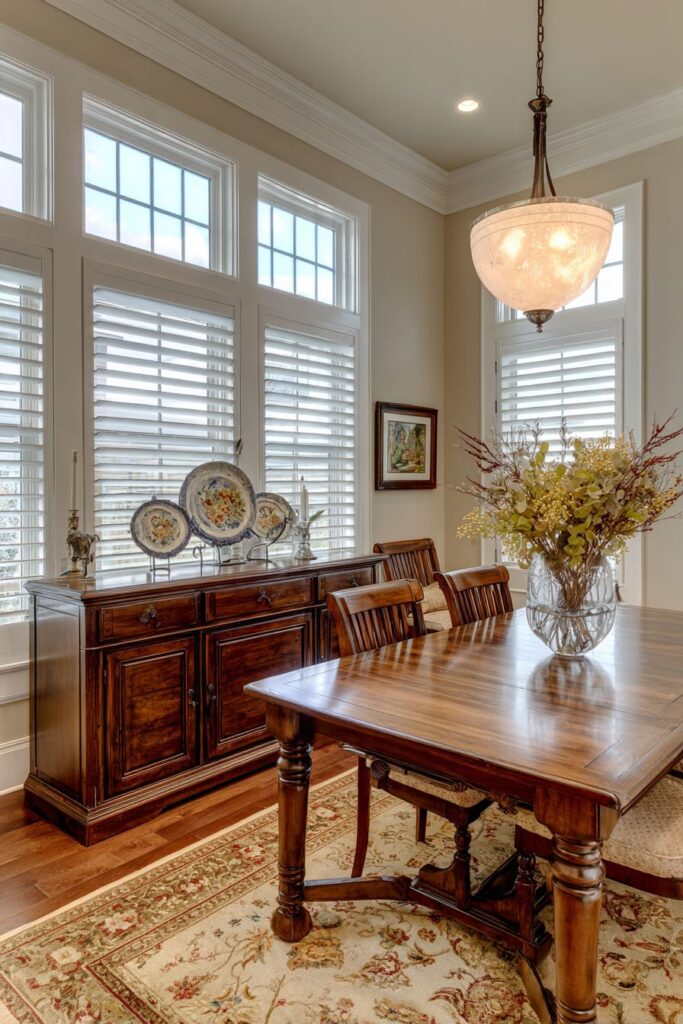
The substantial rectangular dining table in rich walnut wood exemplifies American traditional design principles, where functionality meets enduring beauty in furniture built to last generations. Its clean lines and robust construction speak to the practical nature of traditional American craftsmanship, while the wood’s natural grain patterns create visual interest without unnecessary ornamentation. Surrounding this impressive centerpiece, ladder-back chairs with rush seats in natural tones bring authentic colonial charm to the space, their simple construction belying the skilled craftsmanship required to create such enduring comfort.
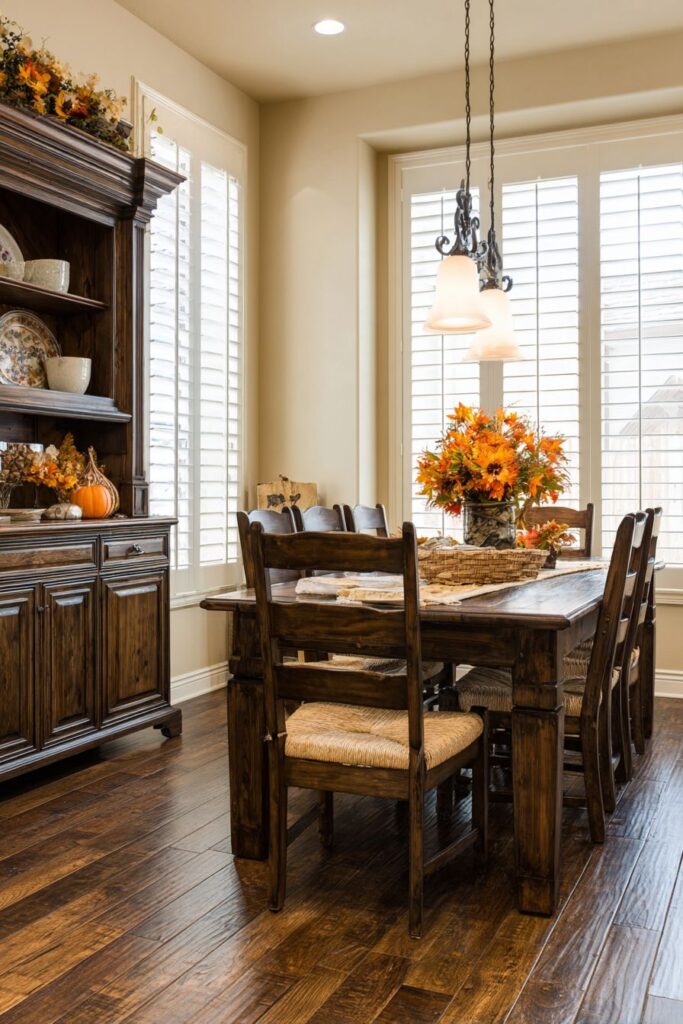
The classic wooden sideboard serves multiple purposes in this thoughtfully designed space, providing storage for linens and serving pieces while offering a surface for seasonal centerpieces and decorative displays. This piece demonstrates the traditional principle of multi-functional furniture, where every item serves both practical and aesthetic purposes. The warm wood tones throughout the room create a cohesive palette that feels both sophisticated and approachable, inviting families to gather for daily meals as well as special occasions.
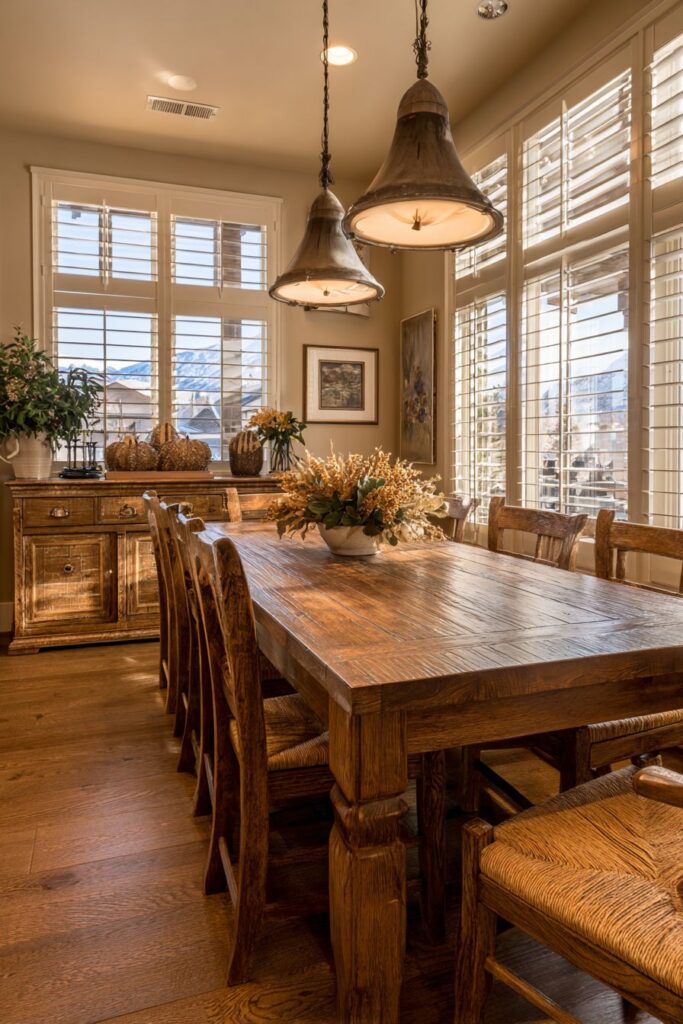
Warm pendant lighting creates intimate pools of illumination over the dining table, while natural light filtering through plantation shutters adds brightness during daytime hours. This layered lighting approach ensures the space feels welcoming at any time of day, with the ability to adjust the ambiance for different occasions. The shutters themselves add architectural interest while providing privacy and light control that enhances the room’s functionality.
The authentic American traditional style celebrated in this space emphasizes honest materials and straightforward construction techniques that have remained virtually unchanged for centuries. Wood grain textures become decorative elements in their own right, while the comfortable family gathering atmosphere prioritizes livability over formality without sacrificing style or sophistication.
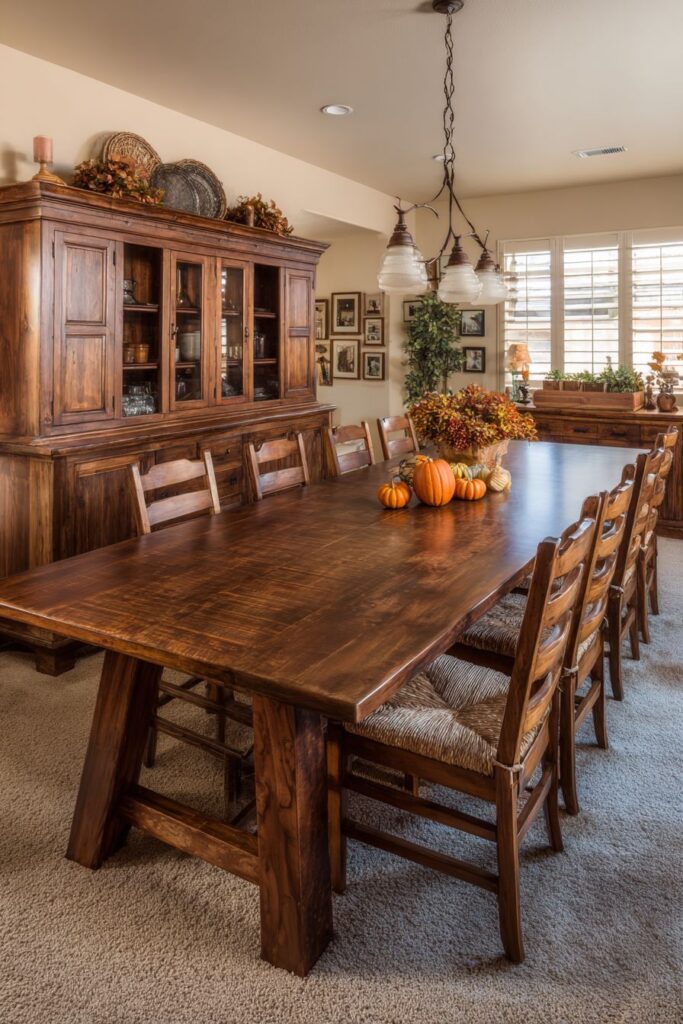
Key Design Tips:
- Choose solid wood furniture with visible grain patterns for authentic traditional appeal
- Mix textures like rush seats and smooth wood surfaces for visual interest
- Use plantation shutters for light control while maintaining traditional architectural elements
- Layer different lighting sources to create flexible ambiance options
- Select multi-functional pieces like sideboards that provide both storage and display space
4. Round Pedestal Oak with Toile Sophistication
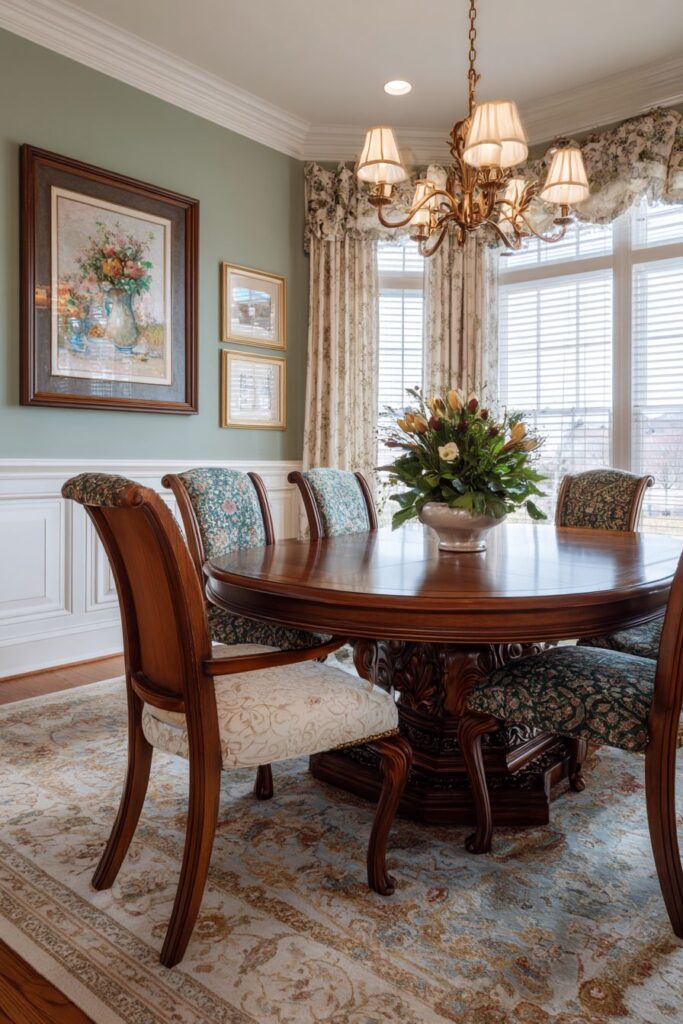
The round pedestal dining table in antique oak creates an intimate gathering space where conversation flows naturally around its curved perimeter, while intricate carved base details showcase the artisan’s skill and attention to decorative elements. This table style represents one of traditional design’s most successful forms, eliminating corner chairs and creating equal seating positions that encourage inclusive dining experiences. The antique oak finish adds depth and character, with subtle variations in tone that speak to the wood’s natural aging process and authentic patina development.
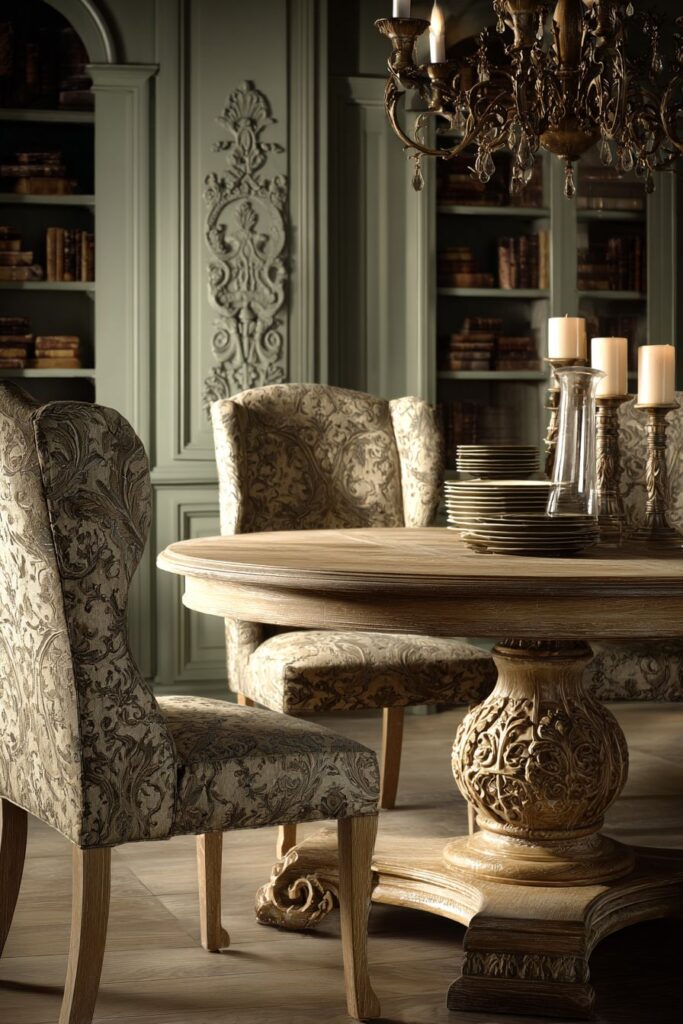
Wingback dining chairs upholstered in classic toile fabric in navy and cream create sophisticated seating that combines comfort with visual elegance. The toile pattern, with its pastoral scenes and timeless motifs, adds narrative interest to the space while maintaining the refined color palette essential to traditional design. These chairs demonstrate how traditional furnishings can provide both physical comfort and visual interest, with their high backs offering support while creating dramatic silhouettes that enhance the room’s formal atmosphere.
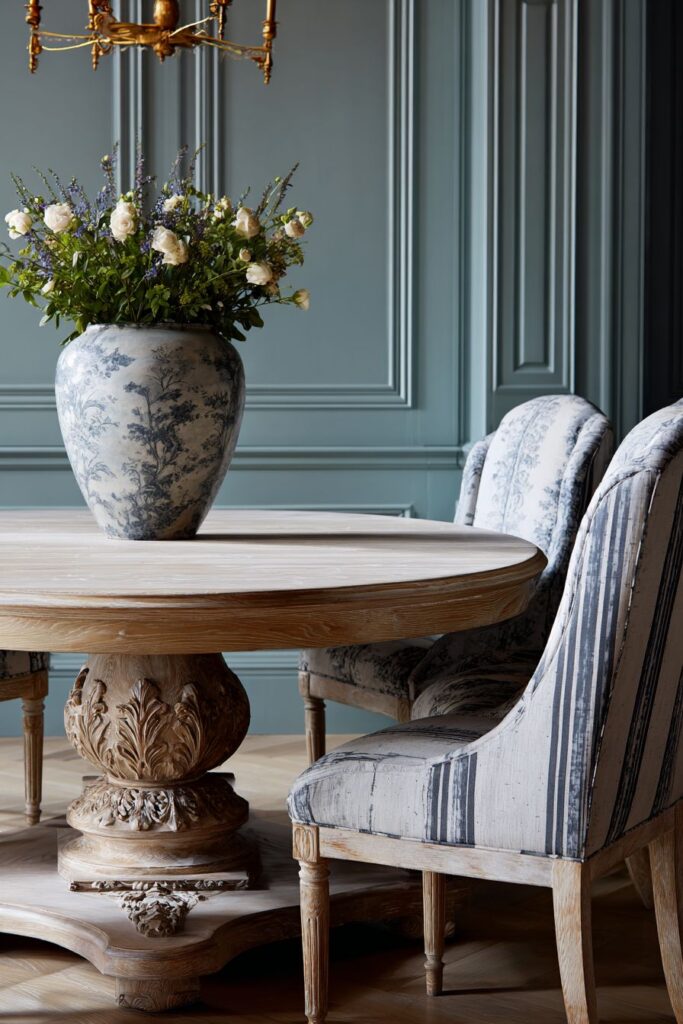
The vintage brass chandelier provides ambient lighting that complements the warm wood tones while adding metallic accents that coordinate with other brass elements throughout the space. Built-in wainscoting adds architectural interest to sage green walls, creating visual depth and texture that enhances the room’s traditional character. This millwork detail represents the kind of craftsmanship that distinguishes truly traditional interiors from mere reproductions.
Professional interior photography captures the balanced composition and traditional color palette, with soft shadows highlighting texture details that might otherwise go unnoticed. The sage green walls provide a calming backdrop that allows the furniture pieces to take center stage while creating a cohesive environment that feels both elegant and comfortable.
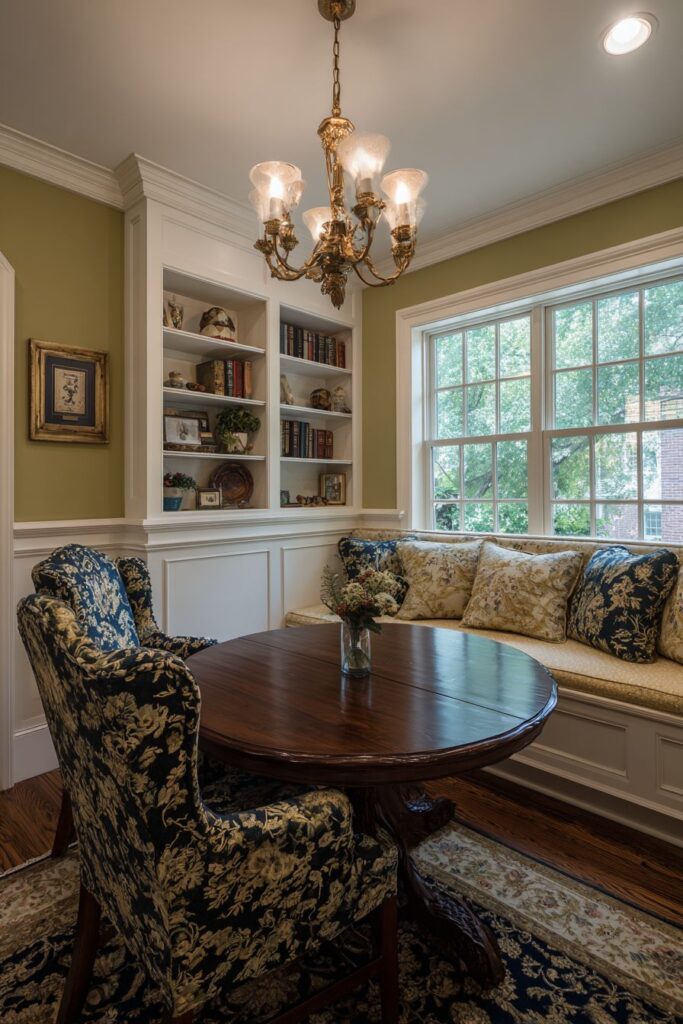
Key Design Tips:
- Select round tables to encourage conversation and create intimate dining experiences
- Use toile fabrics for classic pattern interest without overwhelming the space
- Add architectural details like wainscoting for authentic traditional character
- Choose sage green paint colors for walls to create calming, sophisticated backdrops
- Incorporate wingback chairs for formal dining comfort and visual drama
5. Extendable Espresso Formal Entertaining
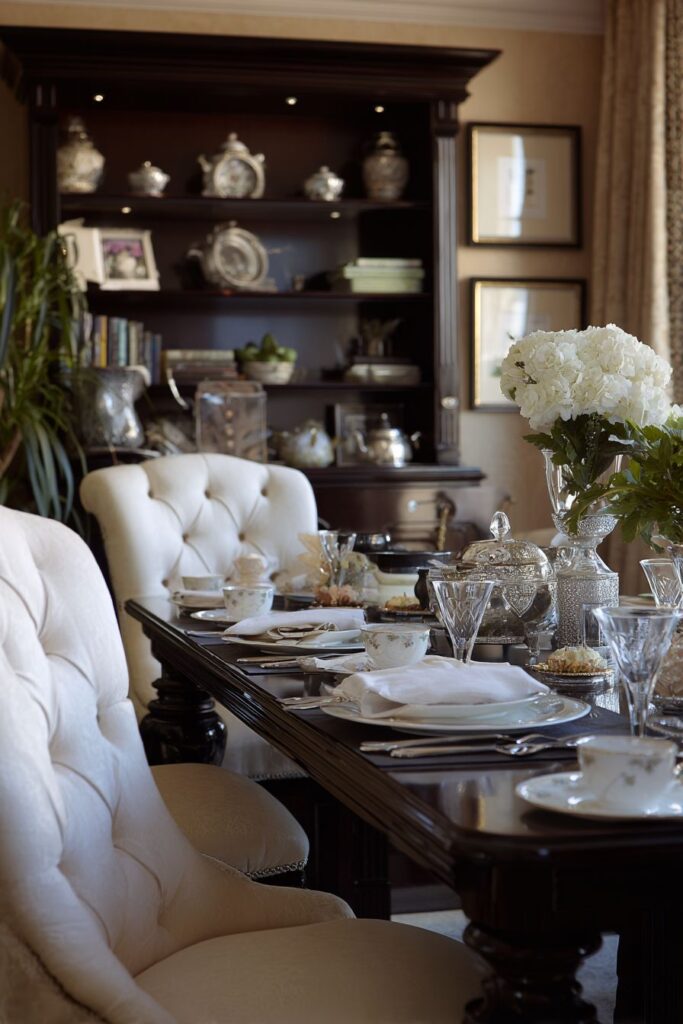
The extendable dining table in dark espresso finish with turned legs represents the pinnacle of formal entertaining furniture, designed to accommodate both intimate family meals and large dinner parties with equal elegance. Set for a formal dinner party with layered table linens and multiple courses of fine china, this table demonstrates how traditional design principles can create spaces that rise to any occasion. The dark wood finish provides a sophisticated backdrop for white linens and gleaming silver, while the turned legs add classical architectural details that never go out of style.
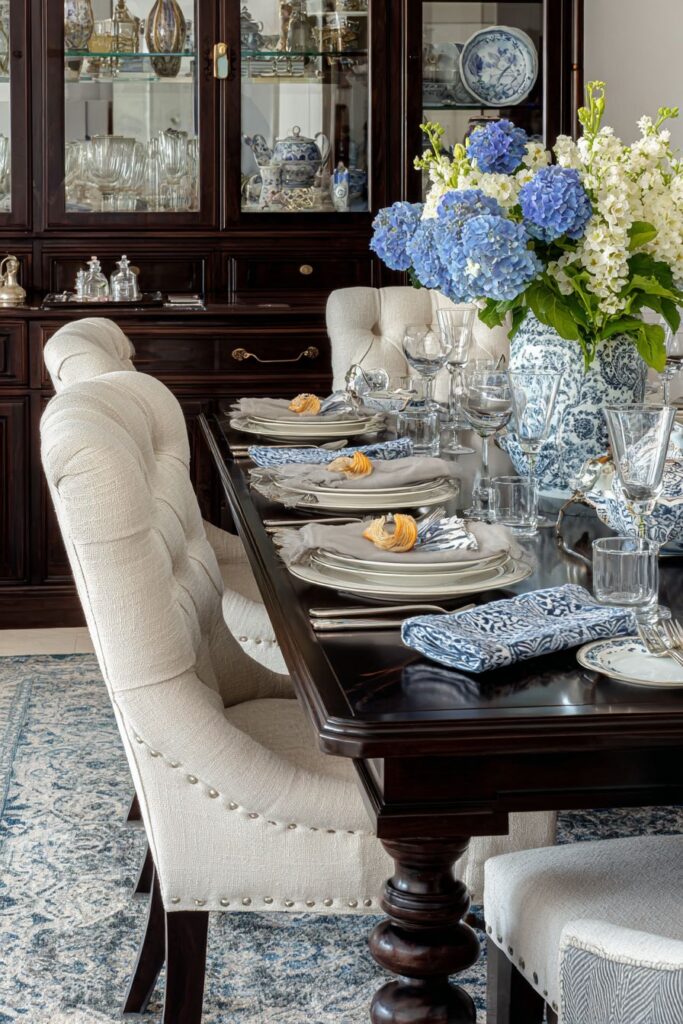
Upholstered host chairs feature button-tufted backs in cream fabric, creating focal points at each end of the table while providing enhanced comfort for the hosts during extended entertaining sessions. These chairs represent the traditional hierarchy of seating, where special attention is paid to the host and hostess positions through more elaborate furnishing choices. The cream upholstery provides visual relief from the dark wood while maintaining the formal color scheme essential to elegant entertaining.
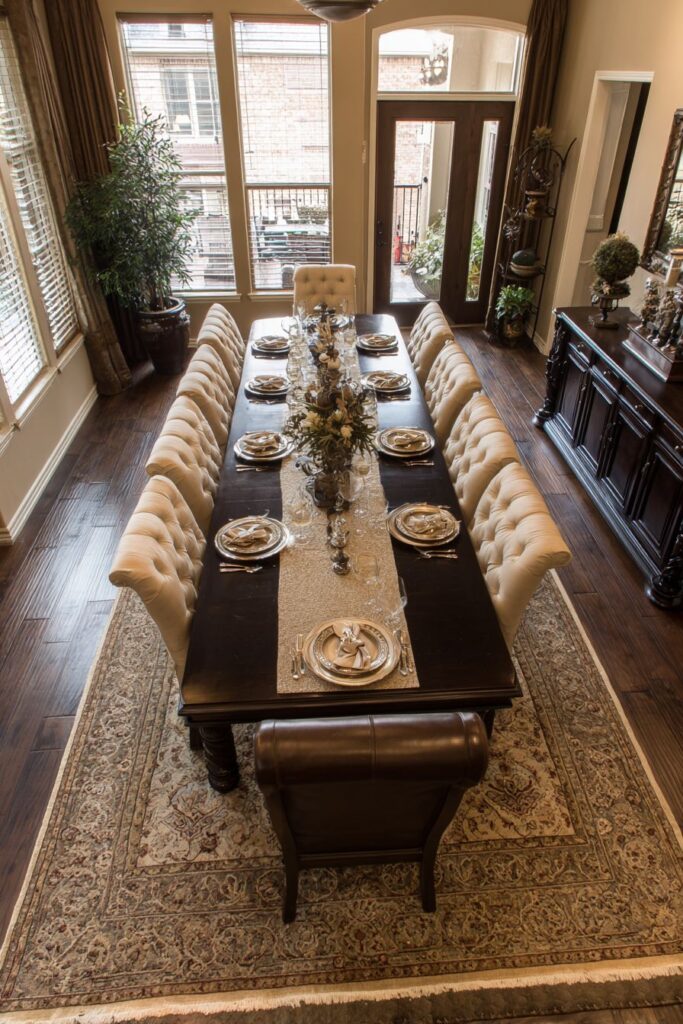
The matching buffet displays silver serving pieces and family heirlooms, creating a curated collection that speaks to generations of gracious entertaining traditions. This storage piece serves both practical and aesthetic purposes, providing space for serving items while creating opportunities to display treasured pieces that add personal meaning to the formal dining experience. The consistency of wood finish between table and buffet creates visual harmony that anchors the room’s design.
Interior design photography with balanced exposure captures the entertaining-ready setup and elegant traditional styling, showcasing how every element works together to create spaces worthy of special occasions. The formal place settings and multiple serving pieces demonstrate the room’s capacity for sophisticated entertaining while maintaining the warmth and welcome essential to memorable dining experiences.
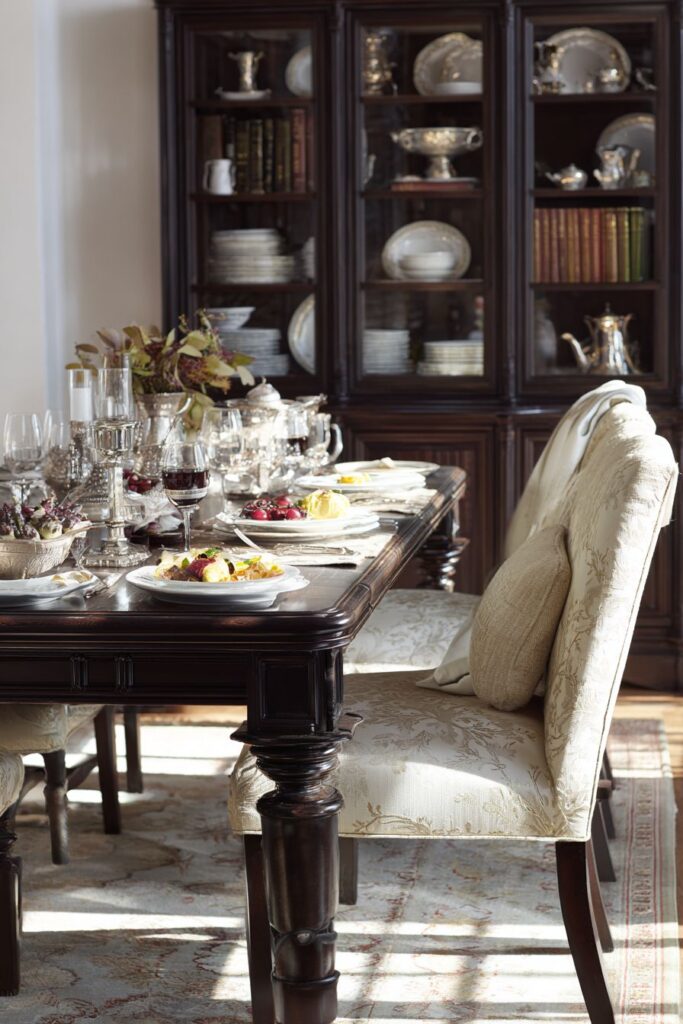
Key Design Tips:
- Choose extendable tables to accommodate varying numbers of dinner guests
- Use button-tufted upholstery for traditional texture and visual interest
- Create formal place settings with multiple courses and proper china placement
- Display family heirlooms and silver pieces for personal touches in formal spaces
- Layer table linens for sophisticated presentation and protection of fine furniture
6. Farmhouse Pine Rustic Elegance
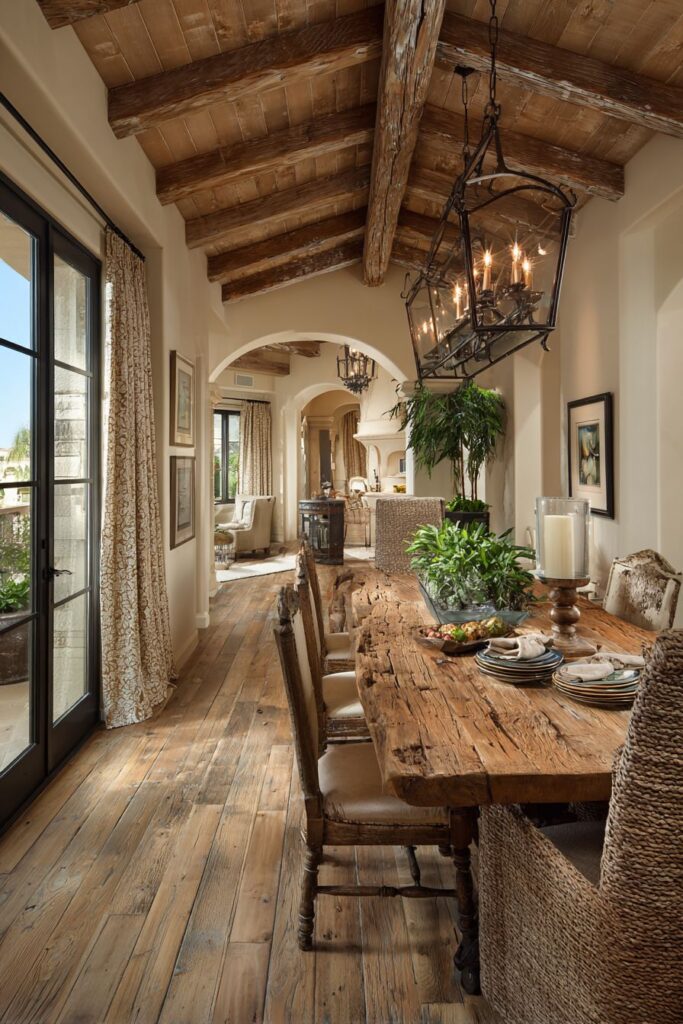
The farmhouse-style dining table in reclaimed pine celebrates the beauty of imperfection, where visible wood grain and natural character marks tell the story of the material’s previous life and add authentic charm that cannot be manufactured. This approach to traditional design embraces the Japanese concept of wabi-sabi, finding beauty in imperfection and the natural aging process that gives furniture its unique personality. The substantial construction and generous proportions reflect the farmhouse tradition of building furniture to last for generations while accommodating large families and frequent guests.
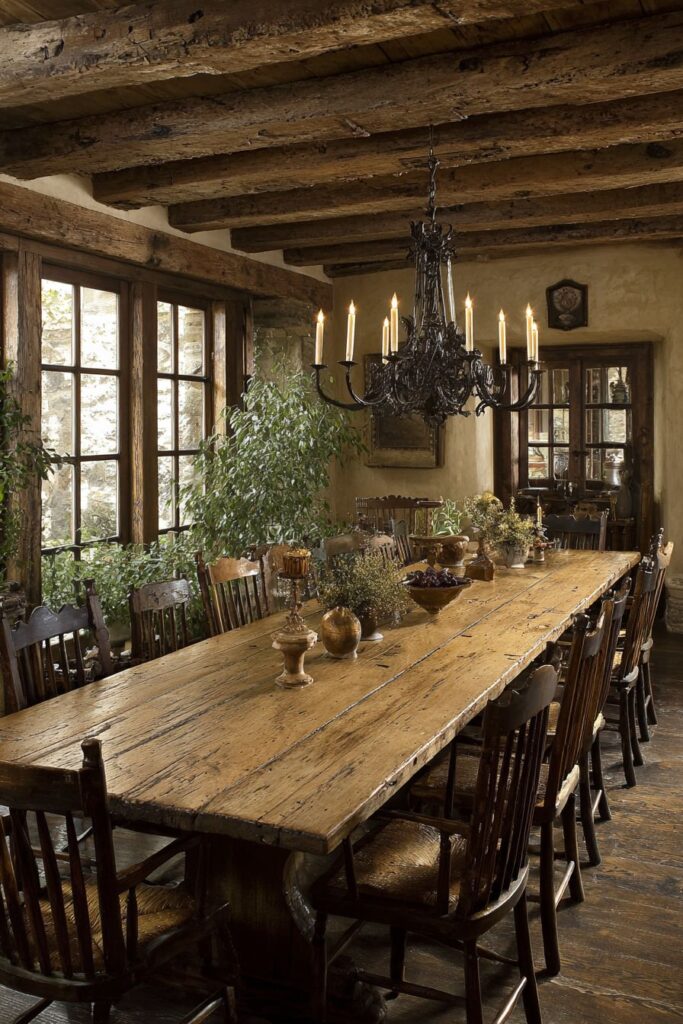
Mismatched antique chairs in coordinating wood tones create a collected-over-time aesthetic that speaks to the gradual accumulation of cherished pieces rather than suite purchasing. This approach represents traditional decorating at its most authentic, where each piece has been carefully chosen for its individual merits and personal significance. The coordinating wood tones ensure visual harmony while the variety of styles adds interest and personality that uniform seating cannot achieve.
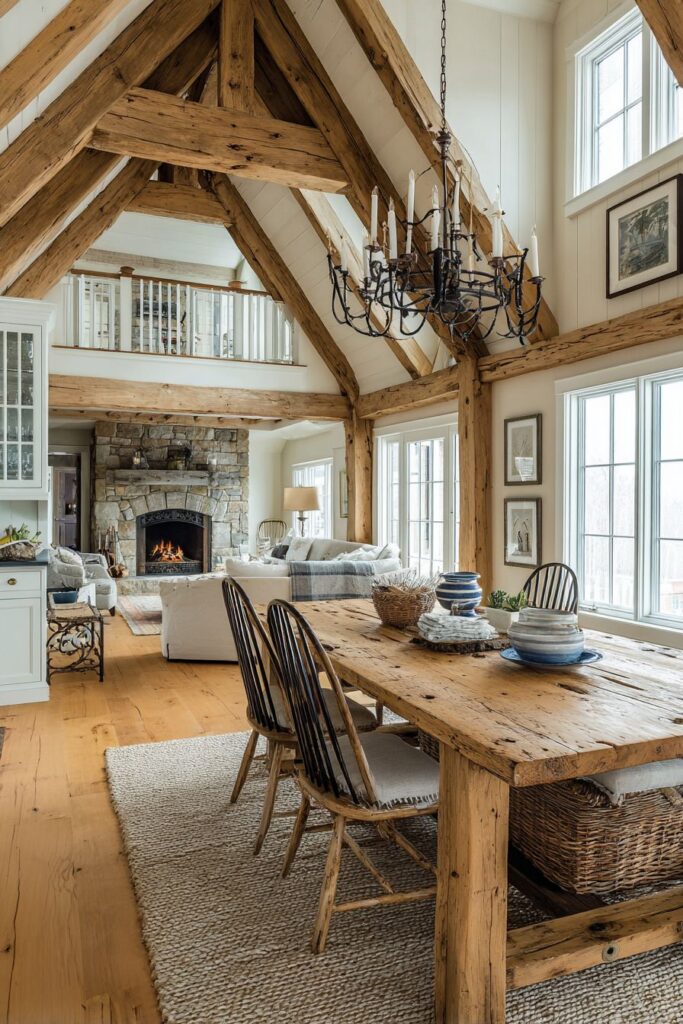
The wrought iron chandelier with candle-style bulbs provides rustic elegance that bridges the gap between casual and formal dining experiences. This lighting choice demonstrates how traditional design can incorporate industrial elements when they serve the overall aesthetic vision. Exposed ceiling beams and wide-plank flooring complete the traditional country look, adding architectural elements that enhance the space’s authentic character.
Wide-angle photography captures the casual yet refined traditional dining atmosphere, showcasing how rustic elements can create sophisticated spaces when carefully curated and thoughtfully arranged. The natural materials and honest construction techniques celebrate the craftsman tradition that forms the foundation of American traditional design.
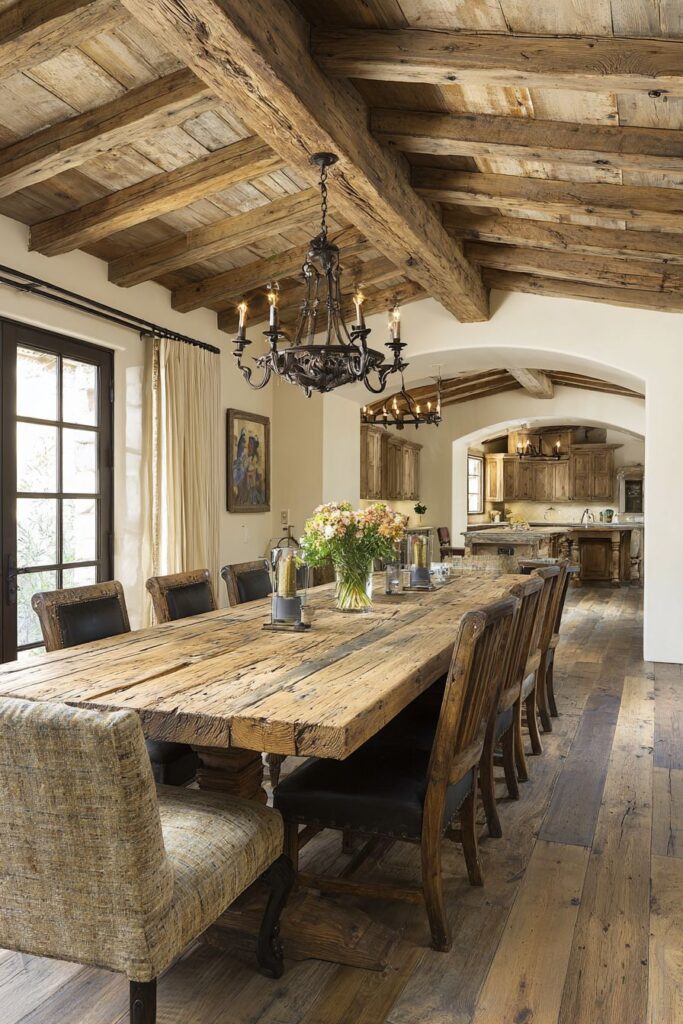
Key Design Tips:
- Embrace imperfections in reclaimed wood for authentic character and charm
- Mix and match antique chairs for collected-over-time authenticity
- Use wrought iron lighting fixtures for rustic elegance and durability
- Expose structural elements like ceiling beams when architecturally appropriate
- Choose wide-plank flooring for traditional farmhouse authenticity
7. Corner Hutch Transferware Collection
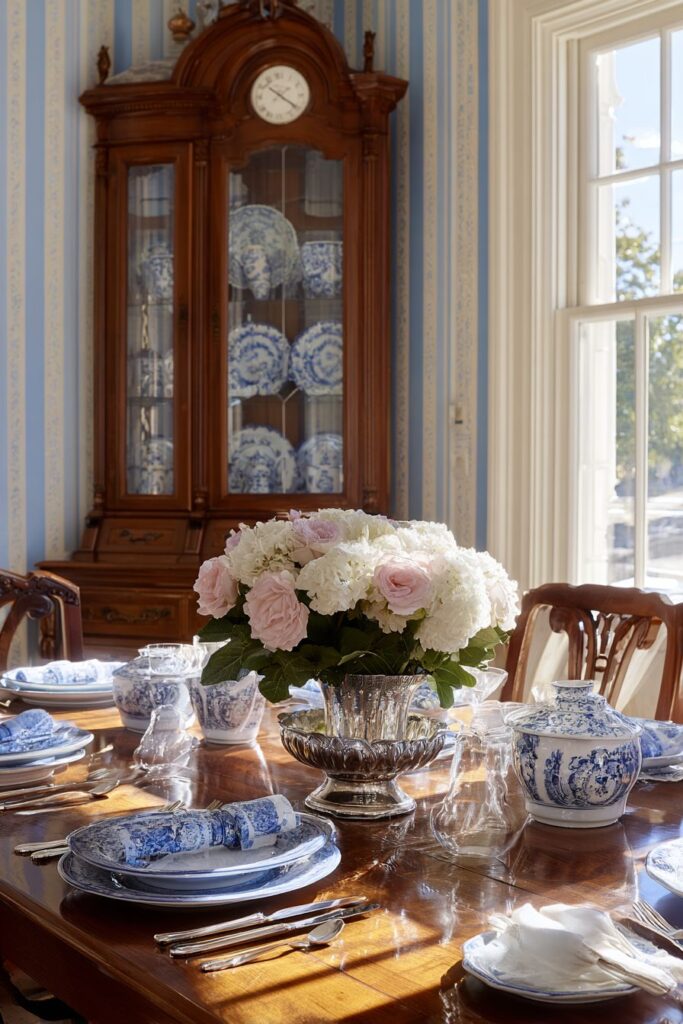
The glass-front corner hutch maximizes space utilization while creating a stunning display opportunity for treasured collections of blue and white transferware china that represents centuries of ceramic artistry and cultural exchange. This specialized furniture piece demonstrates traditional design’s emphasis on both beauty and functionality, where storage needs are met through carefully crafted solutions that enhance rather than detract from the room’s aesthetic appeal. The corner placement makes efficient use of often-underutilized space while creating a focal point that draws the eye upward and adds visual interest to the room’s vertical surfaces.
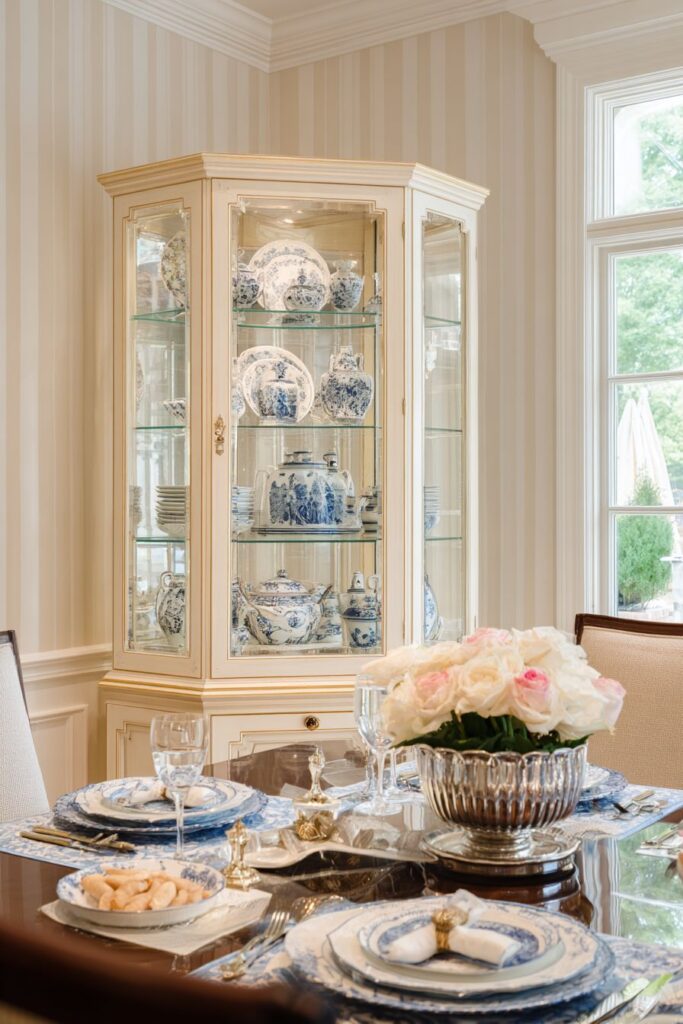
The dining table set with coordinating place settings creates visual continuity between the displayed collection and the functional dinnerware, demonstrating how traditional design principles encourage the use of beautiful objects in daily life rather than reserving them solely for special occasions. Fresh flowers in a silver bowl centerpiece add natural color and organic shapes that soften the geometric patterns of the china while introducing elements that change seasonally to keep the space fresh and dynamic.
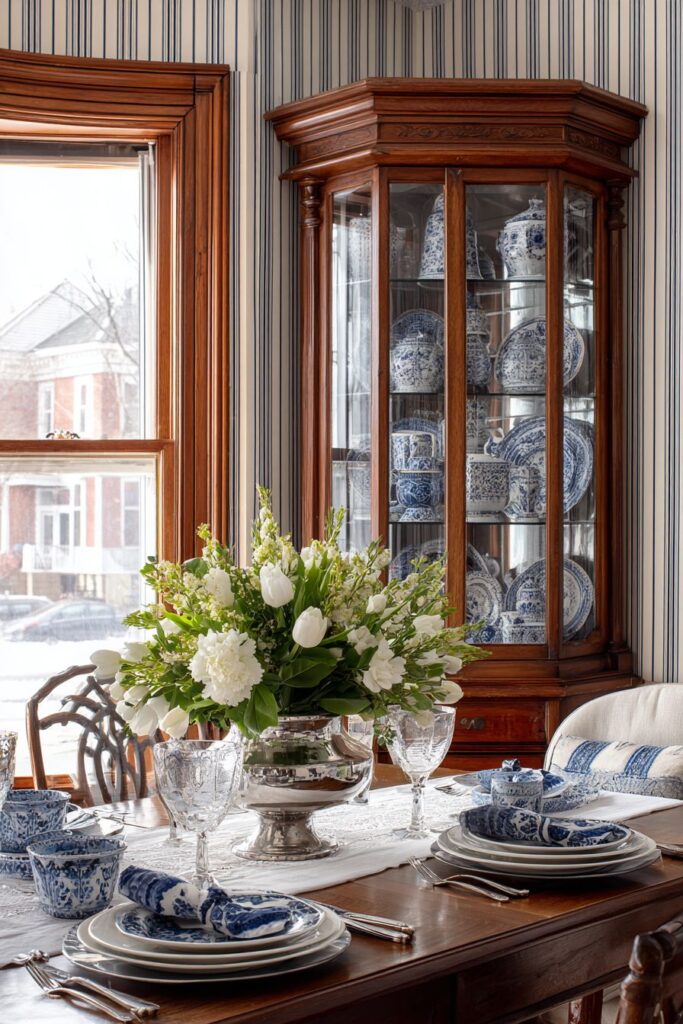
Striped wallpaper in soft blue and cream creates visual interest while maintaining traditional elegance, providing a backdrop that complements the blue and white china collection without competing for attention. This approach to pattern mixing demonstrates the sophisticated restraint characteristic of traditional design, where patterns are used to enhance rather than overwhelm the space’s other elements.
Natural lighting from casement windows highlights the collectible displays and creates gentle shadows on polished wood surfaces, demonstrating how traditional interiors rely on natural light to reveal the beauty of carefully chosen materials and finishes. The interplay of light and shadow adds depth and dimension that artificial lighting alone cannot achieve.
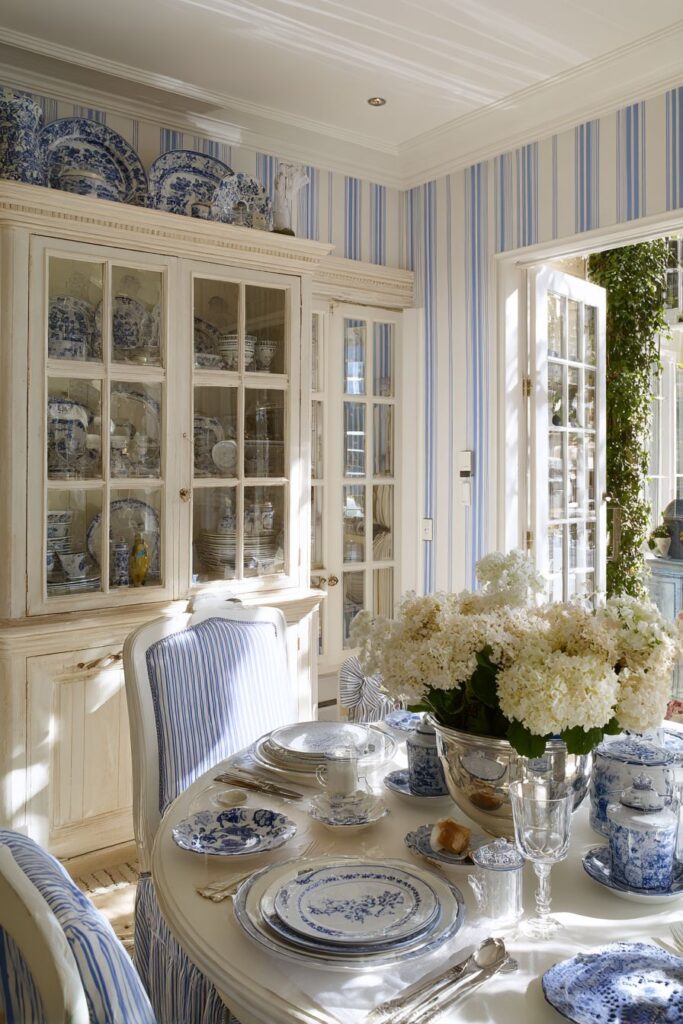
Key Design Tips:
- Use corner hutches to maximize display space in smaller dining rooms
- Coordinate table settings with displayed collections for visual continuity
- Choose wallpaper patterns that complement rather than compete with collections
- Position displays to take advantage of natural lighting for optimal visibility
- Add fresh flowers regularly to introduce color and natural elements
8. Trestle Oak with Windsor Chair Heritage
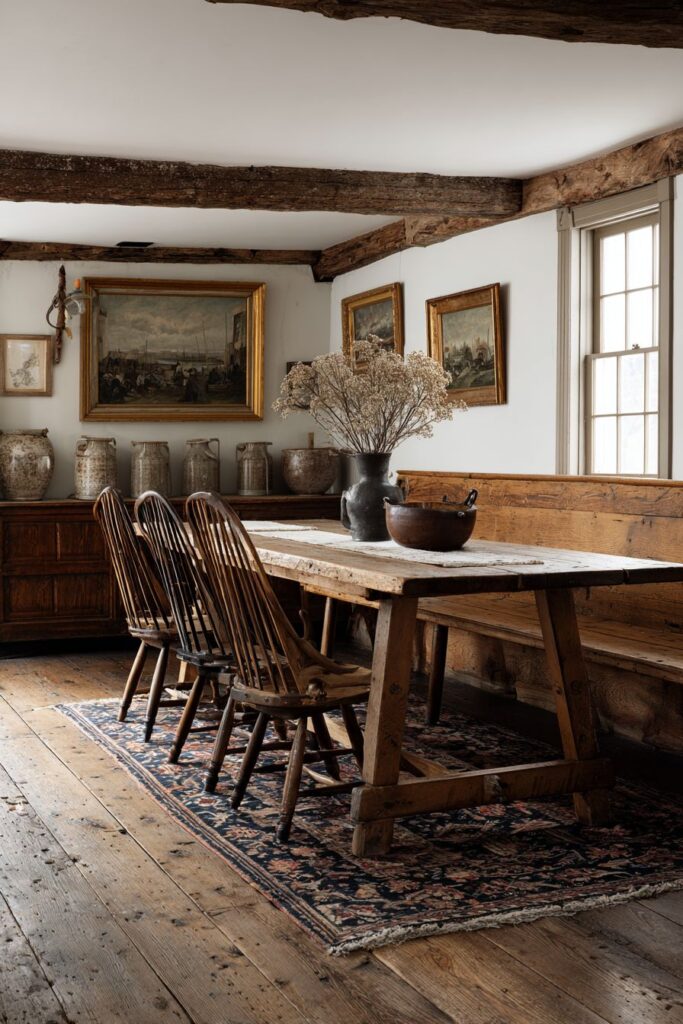
The trestle-style dining table in weathered oak represents one of the oldest and most enduring furniture forms in Western tradition, where structural honesty and functional design create pieces that improve with age and use. Paired with Windsor chairs in matching finish, this combination celebrates the democratic ideals of American furniture design, where comfort and durability take precedence over aristocratic pretension. The weathered finish speaks to decades of family meals and gatherings, adding character and authenticity that new furniture cannot replicate.
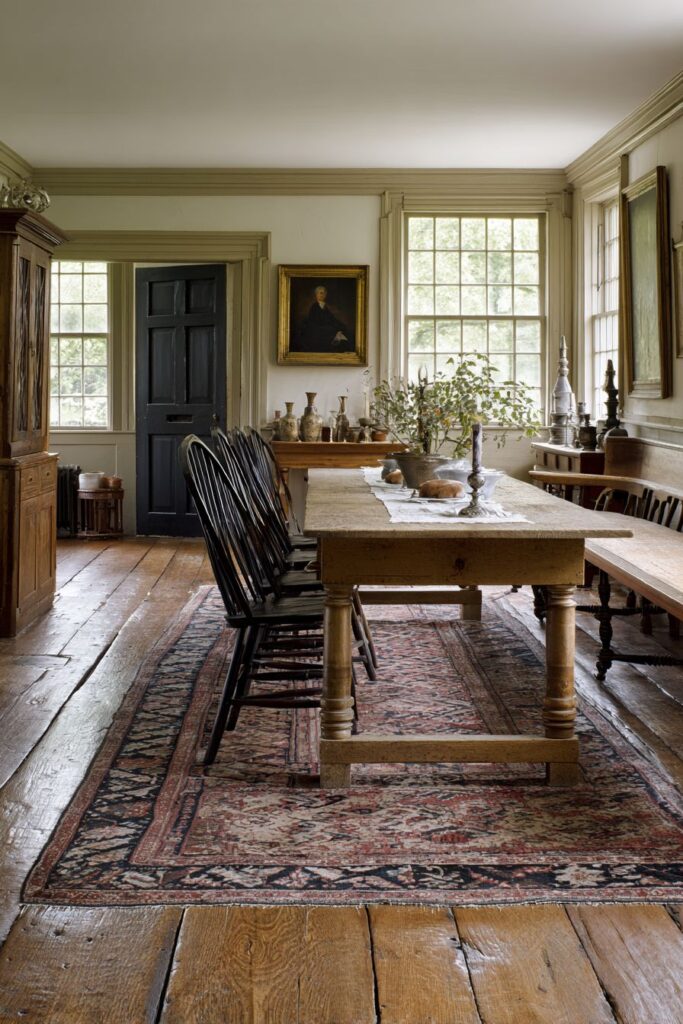
The vintage Persian runner defines the dining area over wide-plank hardwood floors, creating a soft pathway that guides movement while adding pattern and color that complements the neutral wood tones. This layering technique demonstrates how traditional design builds visual interest through the careful combination of textures and patterns rather than relying on bold colors or dramatic contrasts.
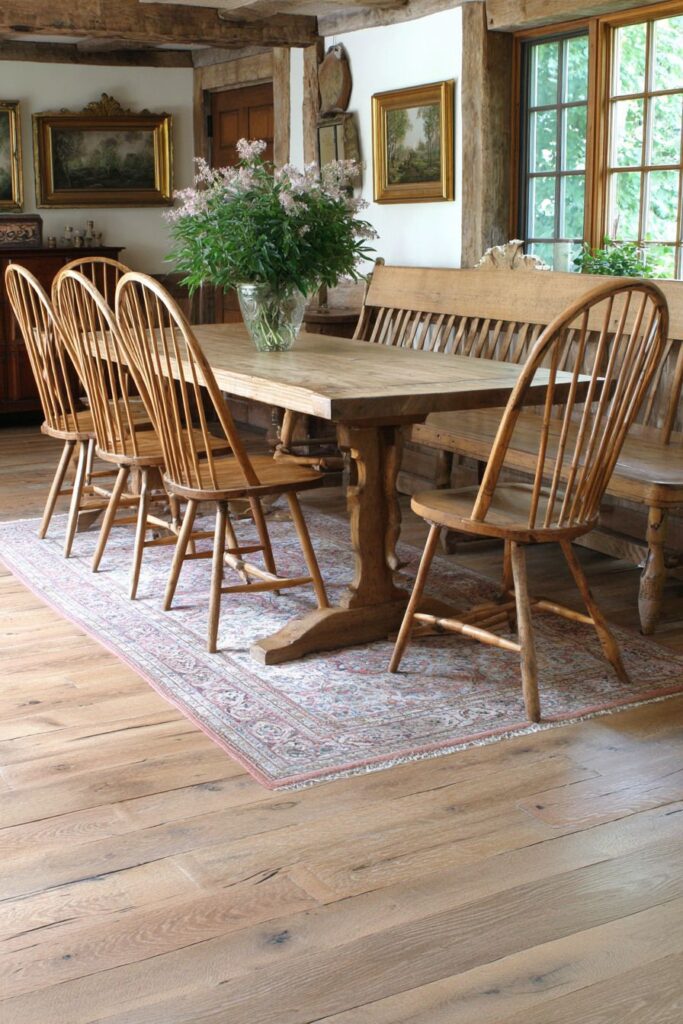
Traditional oil paintings in gold frames adorn the walls above a simple wooden bench used for additional seating, creating a gallery-like atmosphere that celebrates fine art while maintaining the room’s functional requirements. The bench seating provides flexible accommodation for varying numbers of diners while reflecting the practical solutions characteristic of traditional American furniture design.
Interior photography captures the authentic early American traditional style with emphasis on handcrafted furniture details and natural wood patina that can only be achieved through years of careful maintenance and regular use. This approach to traditional design celebrates the beauty of honest materials and time-tested construction techniques that create heirloom-quality pieces.
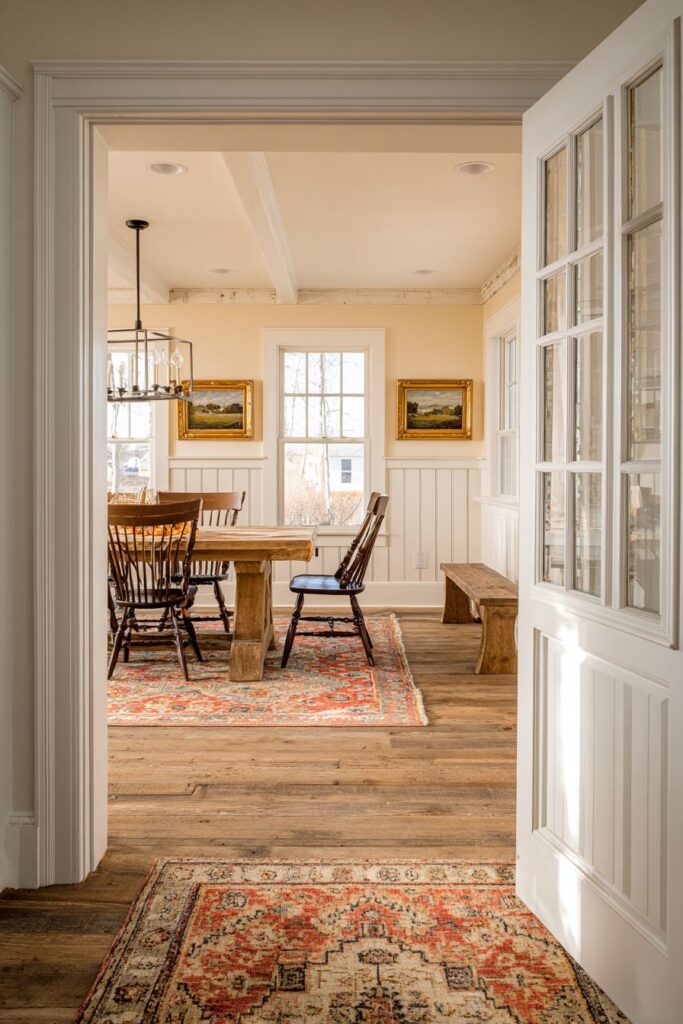
Key Design Tips:
- Choose trestle tables for structural honesty and traditional authenticity
- Use Windsor chairs for comfortable, democratic seating solutions
- Layer Persian runners over hardwood floors for warmth and pattern
- Display traditional art in gold frames for classical elegance
- Include bench seating for flexible dining accommodation
9. Cabriole Leg Cherry Formal Grandeur
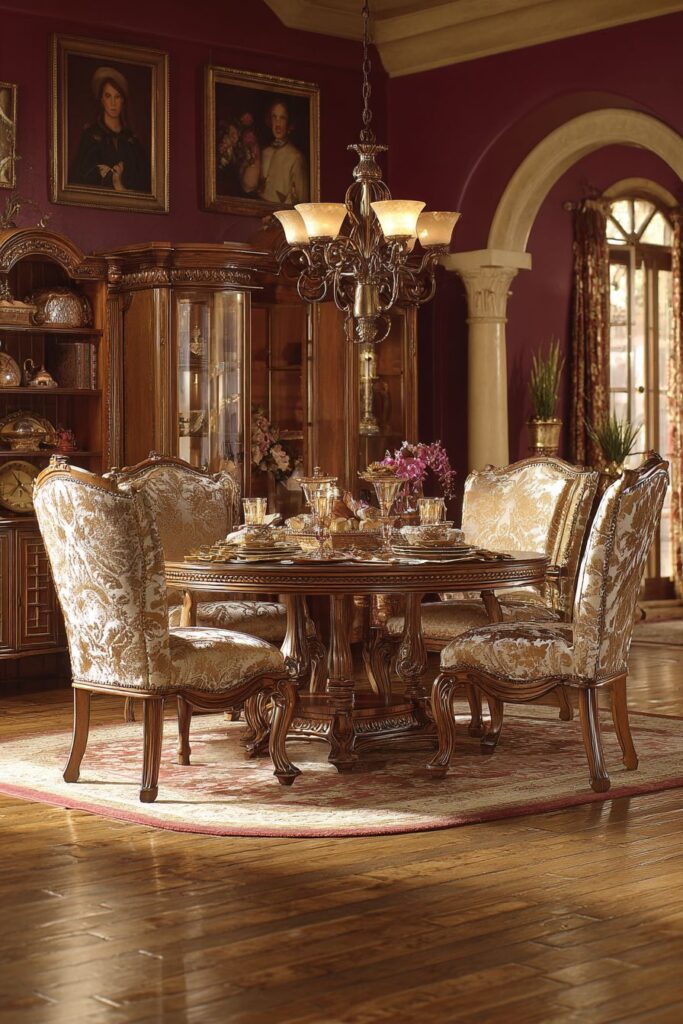
The formal dining set with cabriole leg table in cherry wood represents the height of traditional furniture craftsmanship, where French-inspired curves and masterful joinery create pieces worthy of museum collections. Upholstered chairs featuring classic damask fabric in gold and cream add luxurious comfort while maintaining the formal aesthetic essential to grand dining experiences. This combination of sculptural furniture forms and rich textiles creates an atmosphere of refined elegance that elevates every dining occasion.
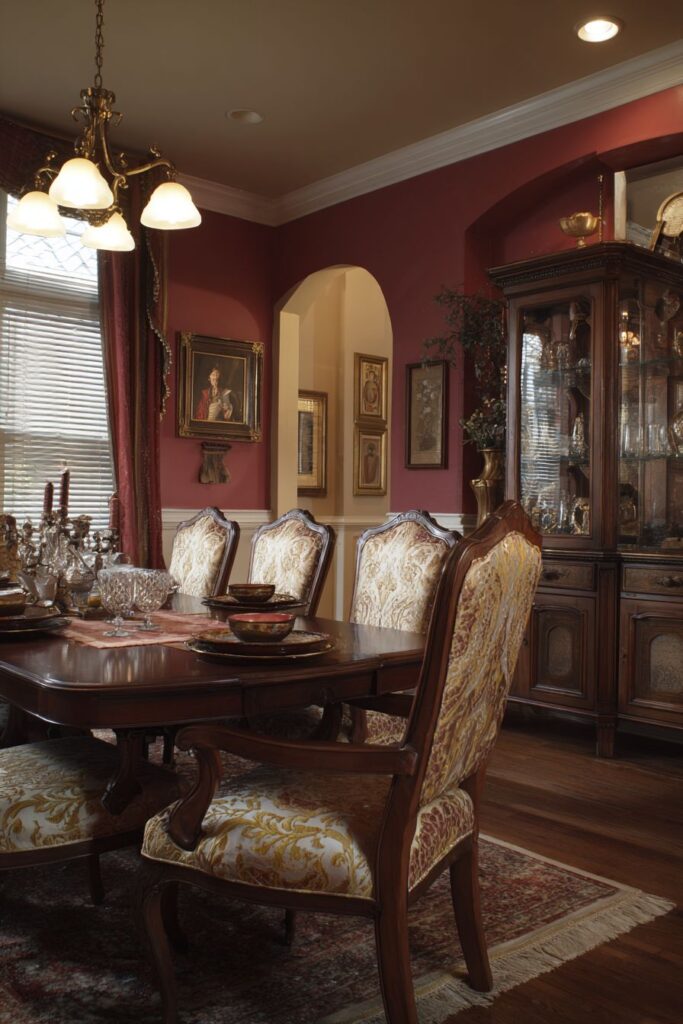
The traditional breakfront displays fine china and crystal while providing essential storage for entertaining necessities, demonstrating how formal dining rooms require specialized furniture pieces designed specifically for their unique functional requirements. The brass chandelier with frosted glass shades provides elegant lighting that complements the warm wood tones while creating the kind of flattering illumination essential for formal entertaining.
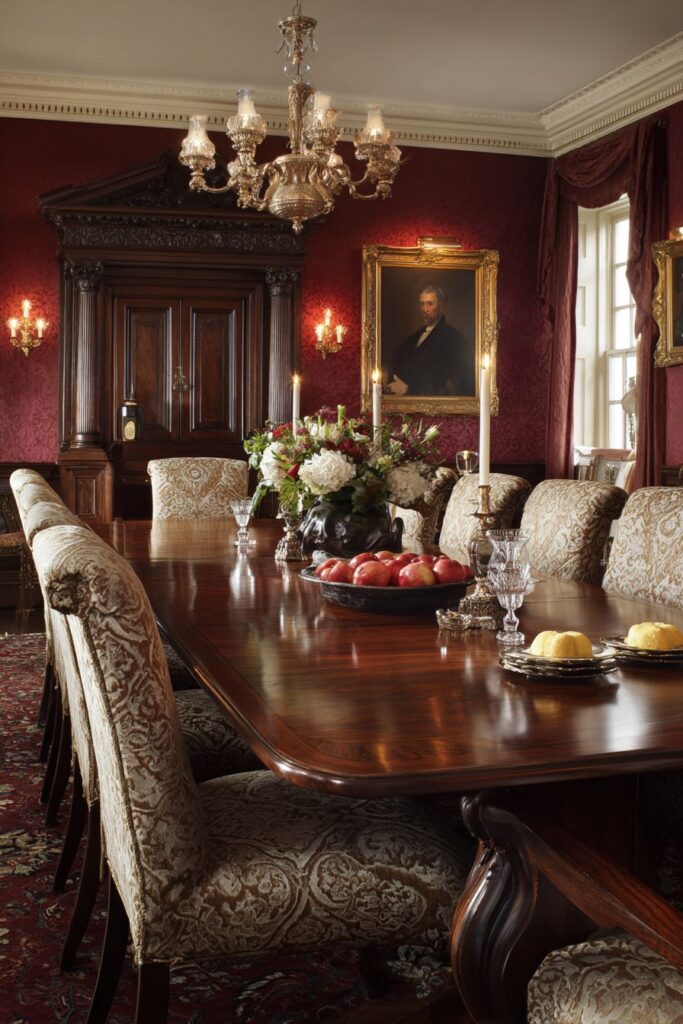
Rich burgundy walls create a dramatic backdrop for gilt-framed portraits, establishing a color scheme that speaks to traditional formality while providing warmth and intimacy that pure white walls cannot achieve. This bold color choice demonstrates how traditional design can embrace drama and sophistication without sacrificing comfort or welcome.
Professional photography emphasizes the formal traditional elegance and rich color coordination that makes this space suitable for the most special occasions while maintaining the timeless appeal that ensures its continued relevance across changing fashion trends. The careful attention to proportion, scale, and quality materials creates a dining room that serves as both functional space and artistic statement.
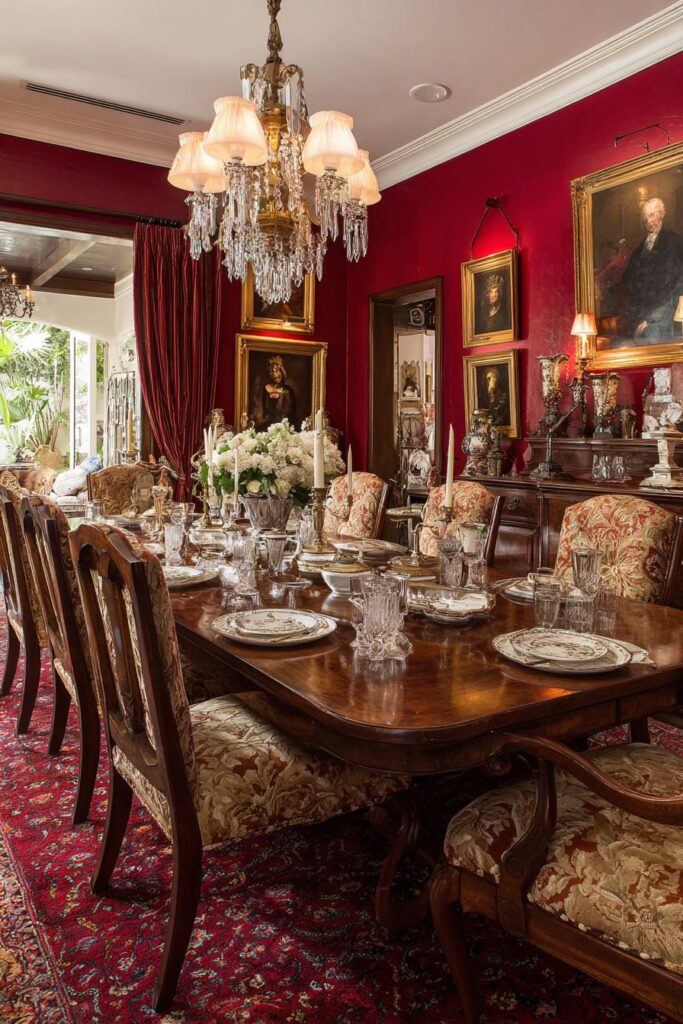
Key Design Tips:
- Select cabriole leg furniture for classical French-inspired elegance
- Use damask upholstery fabrics for traditional luxury and sophistication
- Choose rich wall colors like burgundy for dramatic formal backdrops
- Display fine china and crystal in specialized breakfront storage
- Add gilt-framed artwork for museum-quality traditional elegance
10. Gate-Leg Maple Space-Saving Colonial

The gate-leg drop-leaf dining table in maple wood represents ingenious traditional design solutions for smaller spaces, demonstrating how colonial craftsmen created furniture that maximized functionality without sacrificing style or traditional authenticity. This expandable table design allows for intimate daily meals while providing the capability to accommodate larger gatherings when needed, making it perfect for modern homes where space efficiency is essential but traditional styling remains desired.

Ladder-back chairs with woven seats complement the table’s simple lines while providing comfortable seating that reflects the honest construction techniques characteristic of colonial American furniture making. The natural materials and straightforward construction celebrate the democratic ideals of American craftsmanship, where beauty emerges from function rather than applied ornamentation.
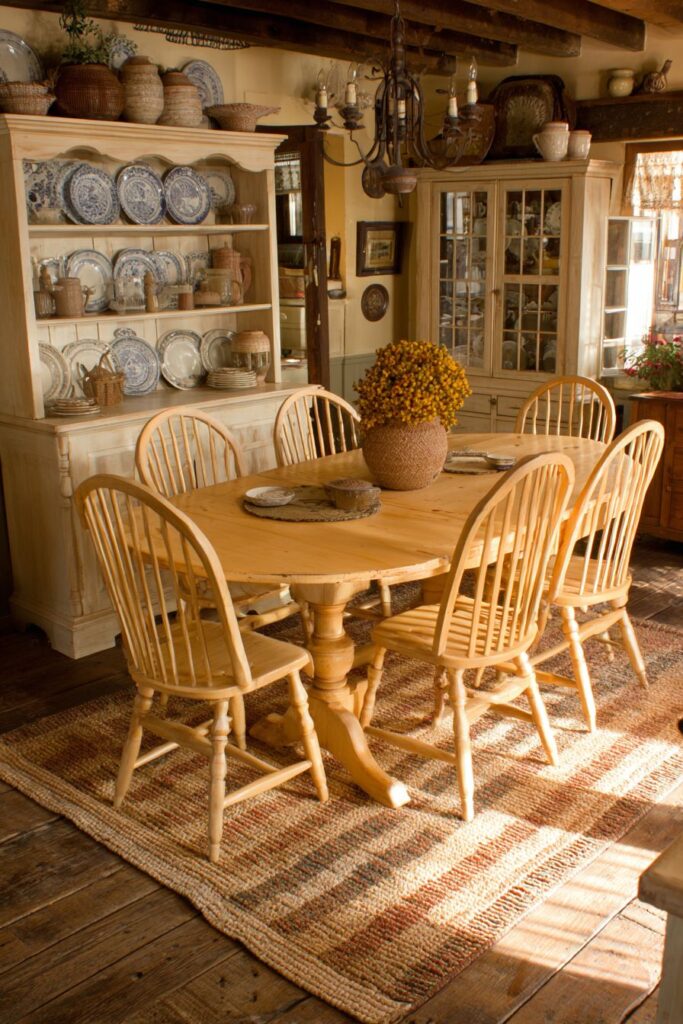
The corner cupboard displays pewter plates and traditional pottery, creating storage solutions that double as decorative displays while reflecting the colonial practice of using beautiful objects in daily life. Braided rugs in earth tones warm the wide-plank floors while adding pattern and texture that complement the natural wood finishes throughout the space.
Interior design photography captures the practical traditional approach suitable for cozy homes while highlighting authentic colonial details that connect contemporary living with historical traditions. This space demonstrates how traditional design principles can be successfully applied to smaller spaces without losing their essential character or appeal.

Key Design Tips:
- Use gate-leg tables for space-efficient traditional dining solutions
- Choose ladder-back chairs with woven seats for authentic colonial styling
- Display pewter and pottery in corner cupboards for period authenticity
- Add braided rugs for traditional texture and warmth on hardwood floors
- Embrace simple construction techniques that celebrate honest craftsmanship
11. Banquette Seating Traditional Efficiency
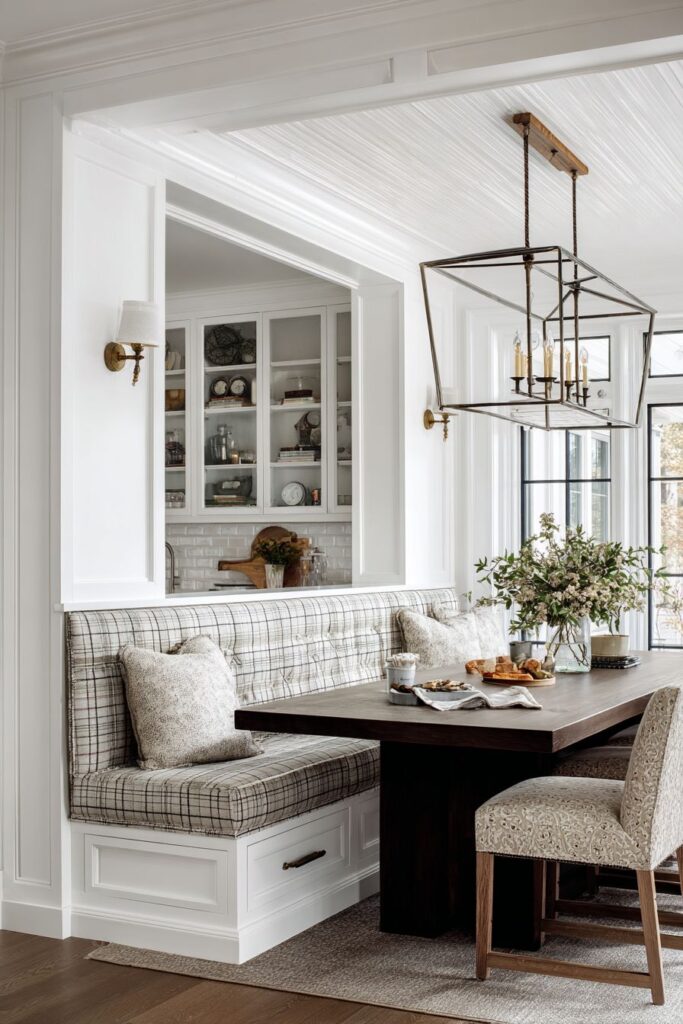
The banquette seating area with button-tufted upholstery in classic plaid fabric demonstrates how traditional design can address contemporary space challenges while maintaining authentic styling and comfortable functionality. Paired with a rectangular table in dark wood, this arrangement maximizes seating capacity while creating intimate dining experiences that encourage conversation and connection. The built-in storage beneath the seating maximizes functionality by providing hidden storage for linens, serving pieces, and seasonal items.
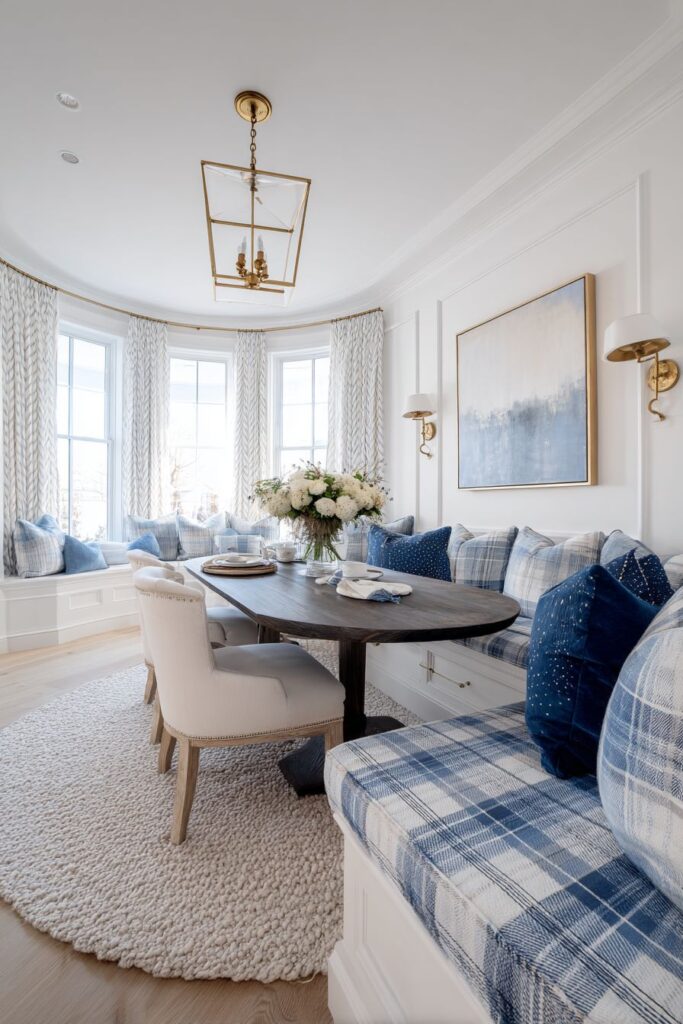
Traditional brass sconces provide task lighting while maintaining the warm, welcoming atmosphere essential to successful dining spaces, while a simple wooden chandelier centers the space with additional ambient lighting. This layered lighting approach ensures the space remains functional and attractive throughout different times of day and various dining occasions.
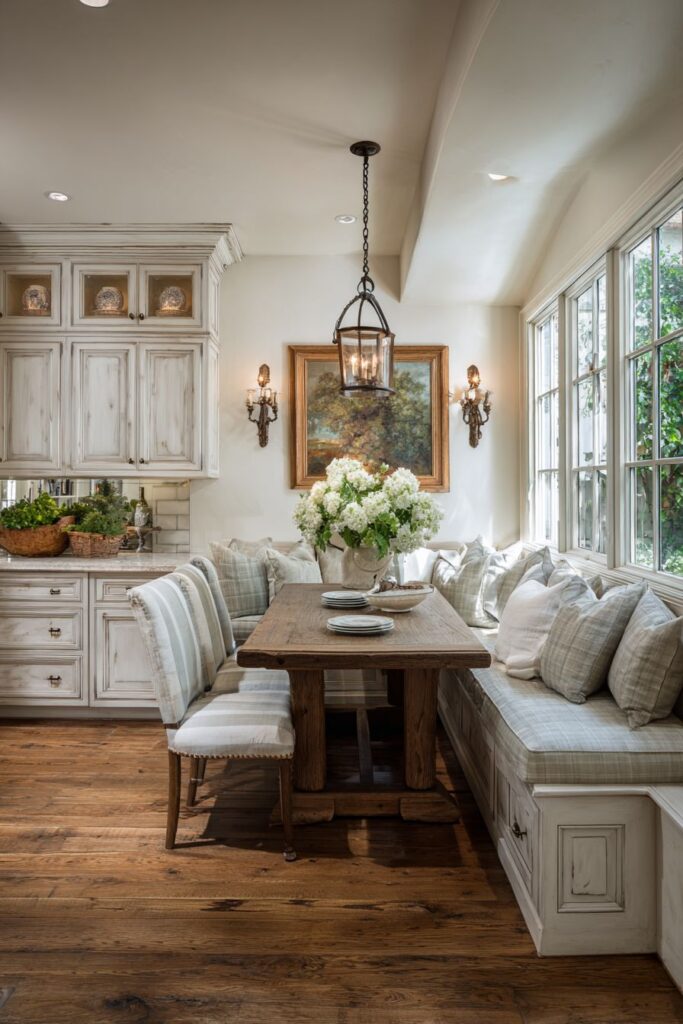
Wide-angle photography shows the efficient use of space while maintaining traditional comfort and style elements that make the area feel welcoming rather than cramped. The button-tufted upholstery adds traditional texture and visual interest while the plaid fabric introduces pattern that complements rather than overwhelms the space’s other elements.
This approach to traditional dining design proves that authentic styling can be successfully adapted to contemporary living requirements without sacrificing the comfort, beauty, or functionality that makes traditional design enduringly popular among homeowners seeking timeless appeal.
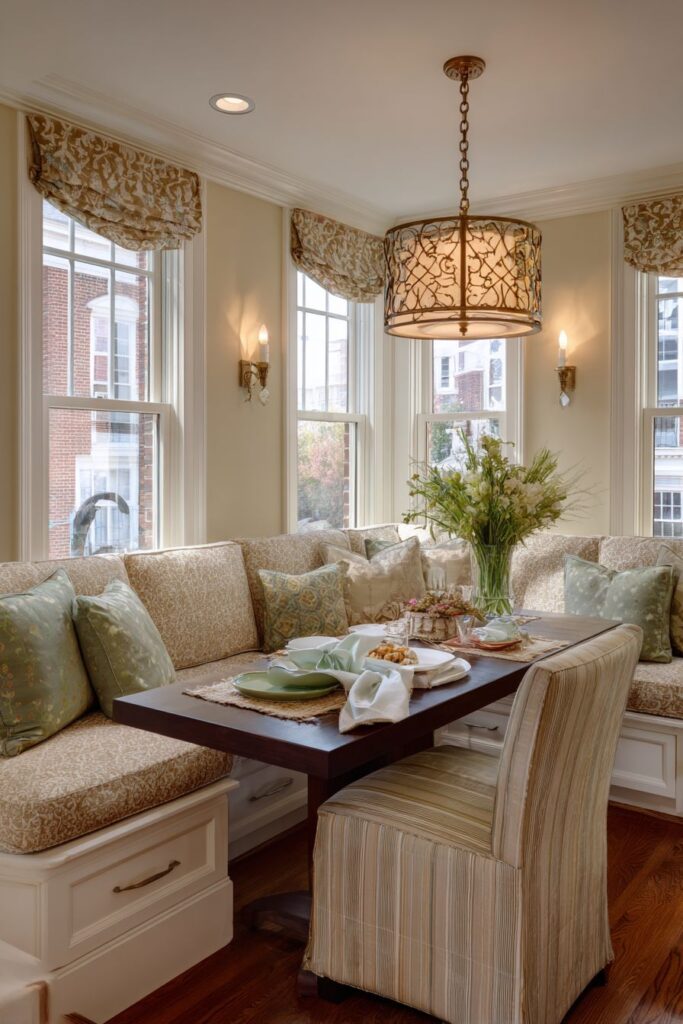
Key Design Tips:
- Use banquette seating to maximize capacity in smaller dining areas
- Choose button-tufted upholstery for traditional texture and comfort
- Add built-in storage beneath seating for efficient space utilization
- Install brass sconces for traditional task lighting and ambiance
- Select plaid fabrics for classic pattern that works in casual traditional settings
12. Harvest Table Distressed Pine Country Charm
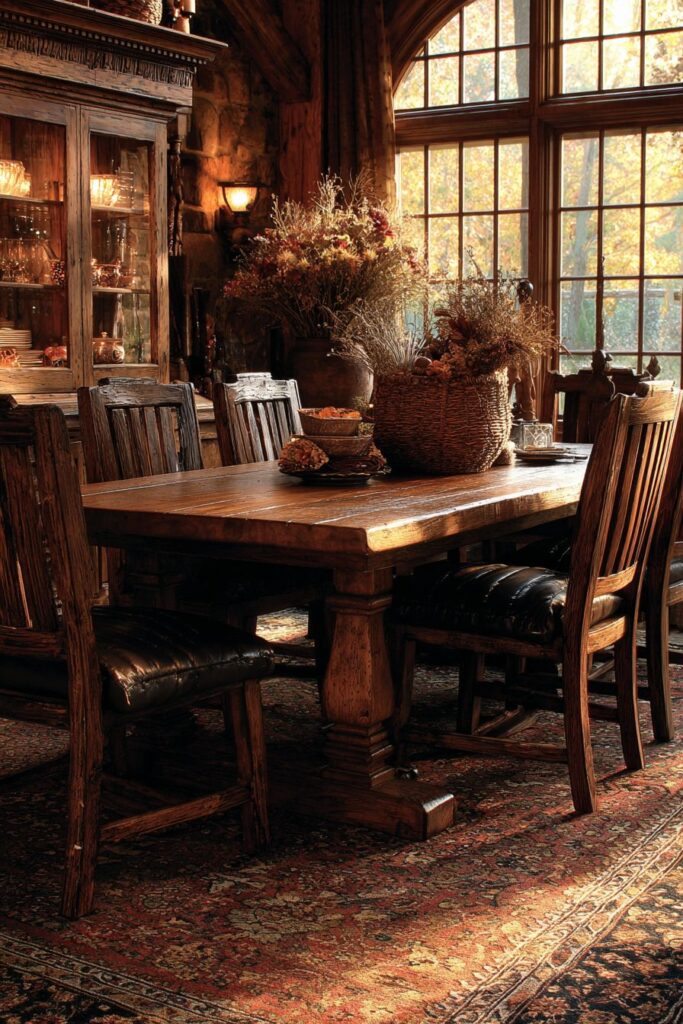
The harvest table in distressed pine surrounded by rush-seated chairs with ladder backs creates an authentic country dining environment where the patina of age and use adds character that cannot be replicated through artificial aging techniques. This furniture combination celebrates the democratic ideals of American traditional design, where comfort, durability, and honest construction take precedence over formal elegance or aristocratic pretension.
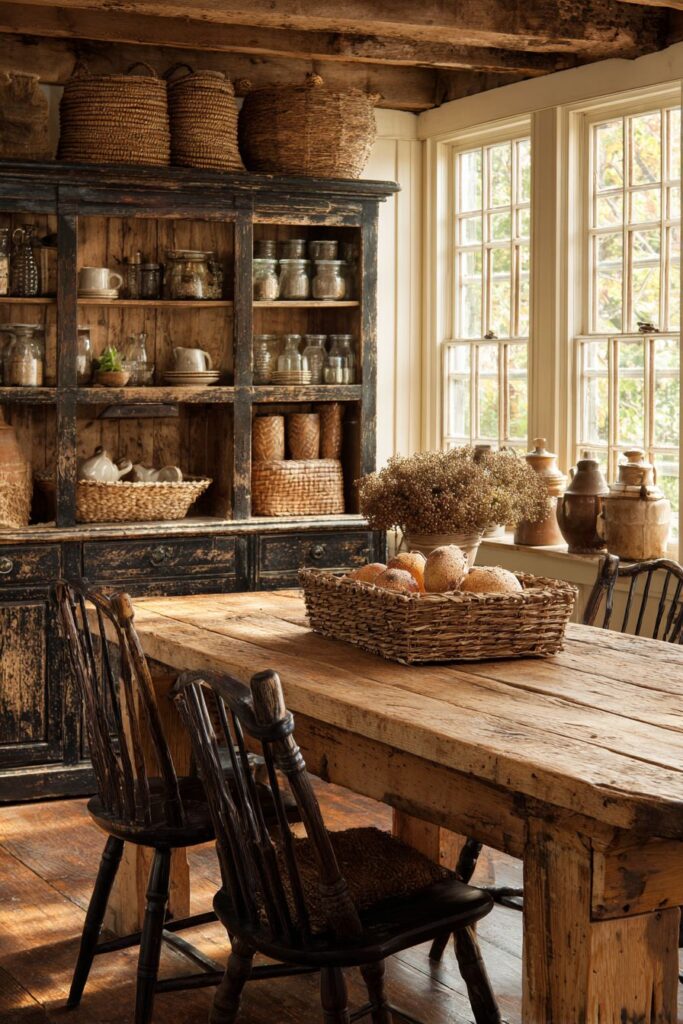
The traditional pie safe displays vintage serving pieces and linens, providing both storage and decorative display opportunities while reflecting the practical nature of country living where beautiful objects serve daily functions. Handwoven baskets and dried flower arrangements add authentic country touches that connect the interior space with the natural world beyond its walls.
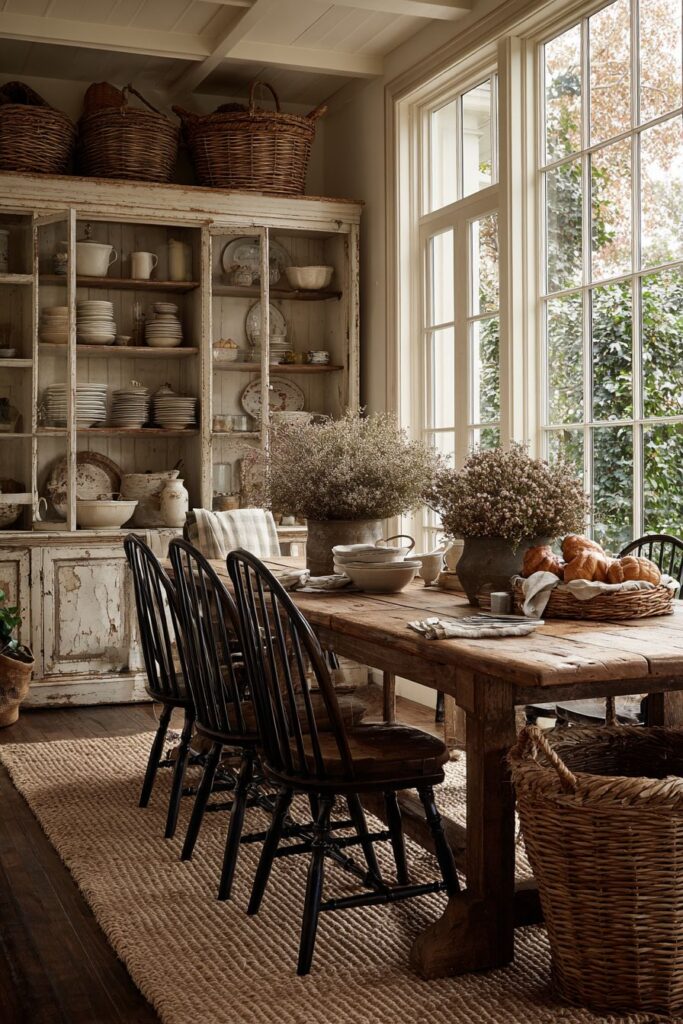
Natural lighting through multi-pane windows creates a warm, inviting atmosphere that changes throughout the day, adding dynamic interest that artificial lighting cannot replicate. The windows themselves become decorative elements, with their divided lights creating geometric patterns that add visual interest while maintaining traditional architectural authenticity.
Interior photography captures the lived-in traditional charm with attention to handcrafted textures and natural materials that create spaces feeling like they have evolved organically over time rather than being designed and decorated all at once. This approach to traditional design celebrates the gradual accumulation of meaningful objects and the patina that comes from daily use and loving care.
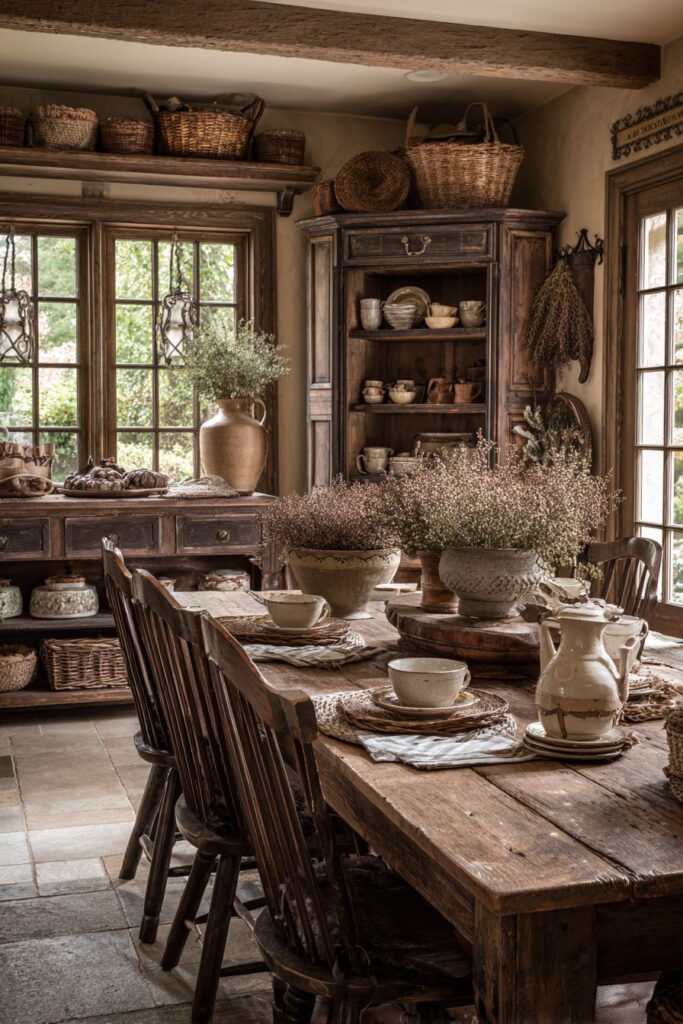
Key Design Tips:
- Choose distressed finishes for authentic aged character and charm
- Use pie safes for traditional country storage and display solutions
- Add handwoven baskets for natural texture and practical storage
- Include dried flower arrangements for year-round natural color
- Maximize natural lighting through traditional multi-pane windows
13. Duncan Phyfe Mahogany Federal Elegance
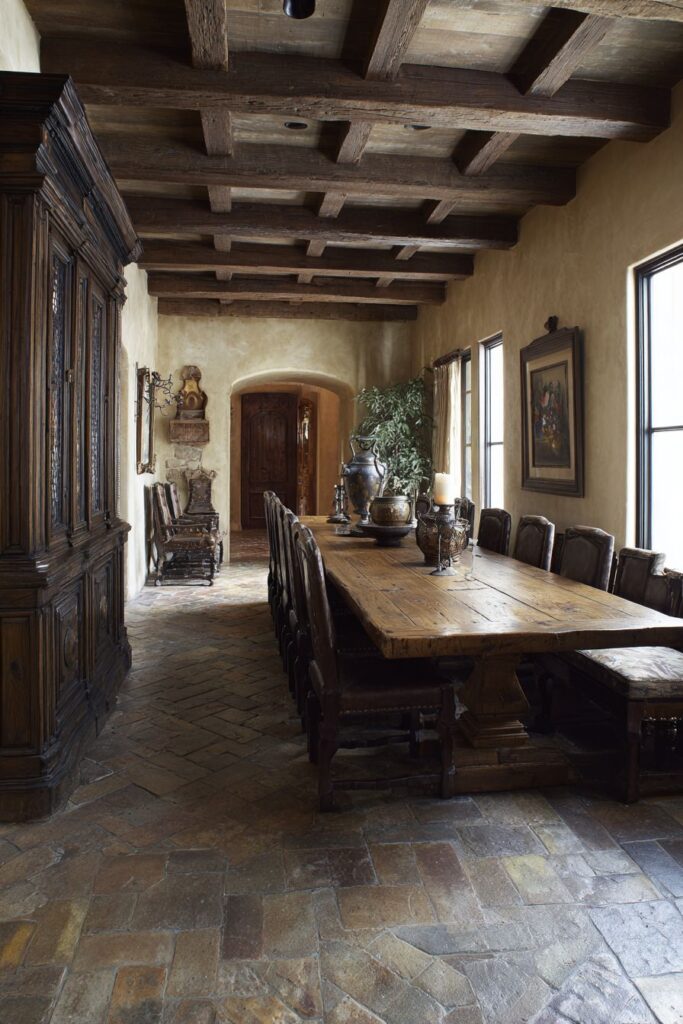
The Duncan Phyfe style dining table with distinctive curved legs and mahogany veneer represents the pinnacle of American Federal period furniture design, where classical European influences were refined and adapted to American tastes and manufacturing capabilities. Surrounded by shield-back chairs with upholstered seats in striped silk, this dining set demonstrates the sophisticated restraint characteristic of Federal period design, where elegant proportions and quality materials create lasting beauty without unnecessary ornamentation.
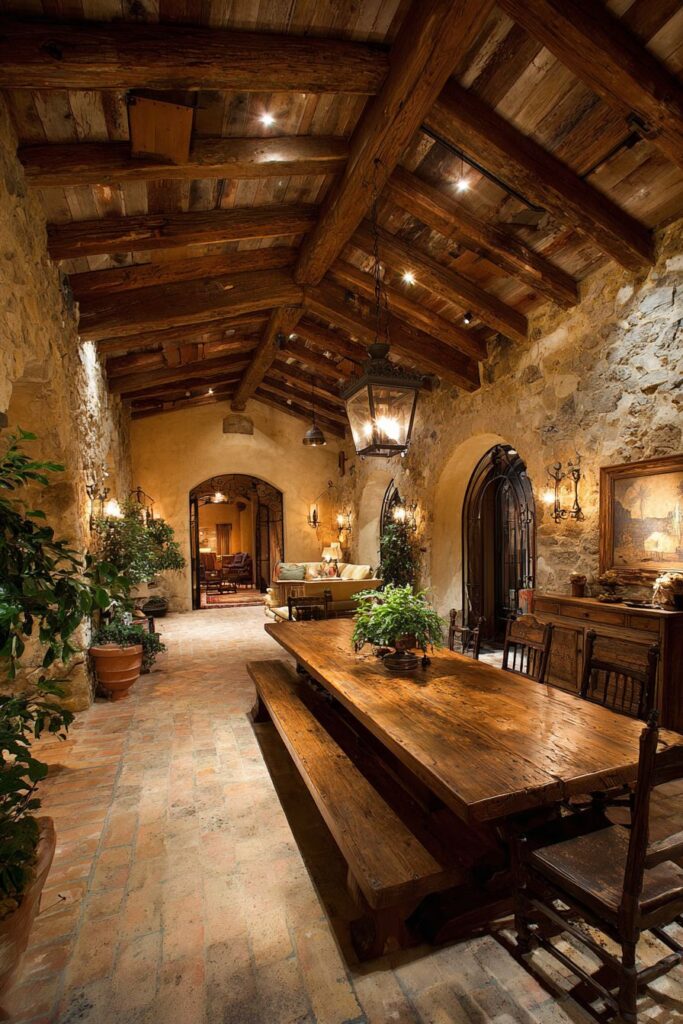
The matching sideboard features inlaid wood details and brass hardware that complement the table’s refined aesthetic while providing essential storage and serving space for formal entertaining. Crystal decanters and silver serving pieces create elegant displays that reflect the civilized lifestyle aspirations of the Federal period, where dining became an art form requiring specialized equipment and refined presentation.
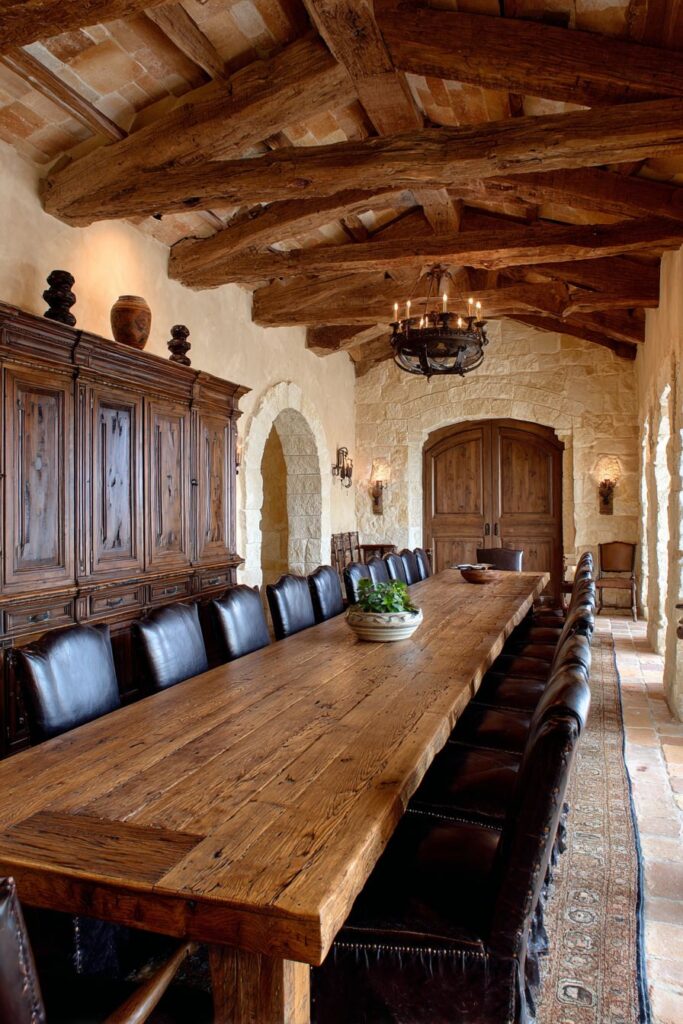
Professional interior photography with soft lighting emphasizes the refined Federal period traditional style and quality craftsmanship that makes these pieces worthy of museum collections while remaining functional for contemporary entertaining needs. The subtle variations in the mahogany veneer and the precision of the inlaid details speak to the high level of craftsmanship that distinguished American Federal furniture.
This approach to traditional dining room design celebrates the marriage of European sophistication with American practicality, creating spaces that feel both grand and approachable while maintaining the timeless appeal that ensures their continued relevance across changing decorating fashions.
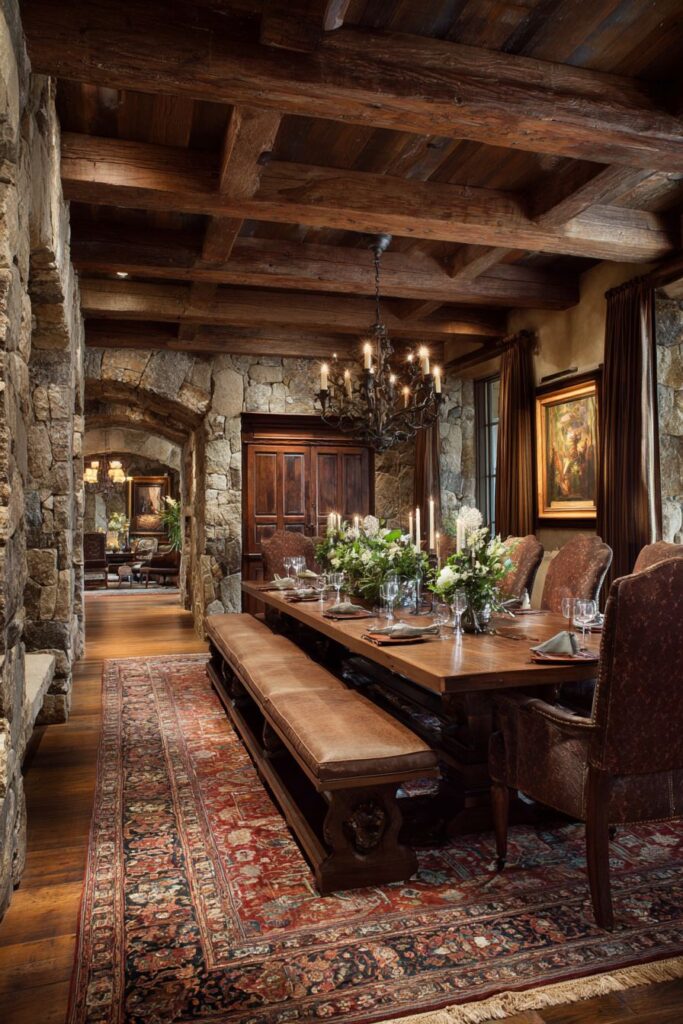
Key Design Tips:
- Select Duncan Phyfe furniture for authentic Federal period elegance
- Use shield-back chairs for classical American traditional seating
- Choose striped silk upholstery for refined Federal period authenticity
- Display crystal decanters and silver pieces for sophisticated entertaining
- Emphasize quality mahogany veneer and inlaid wood details through proper lighting
14. Refectory Oak European Traditional Grandeur
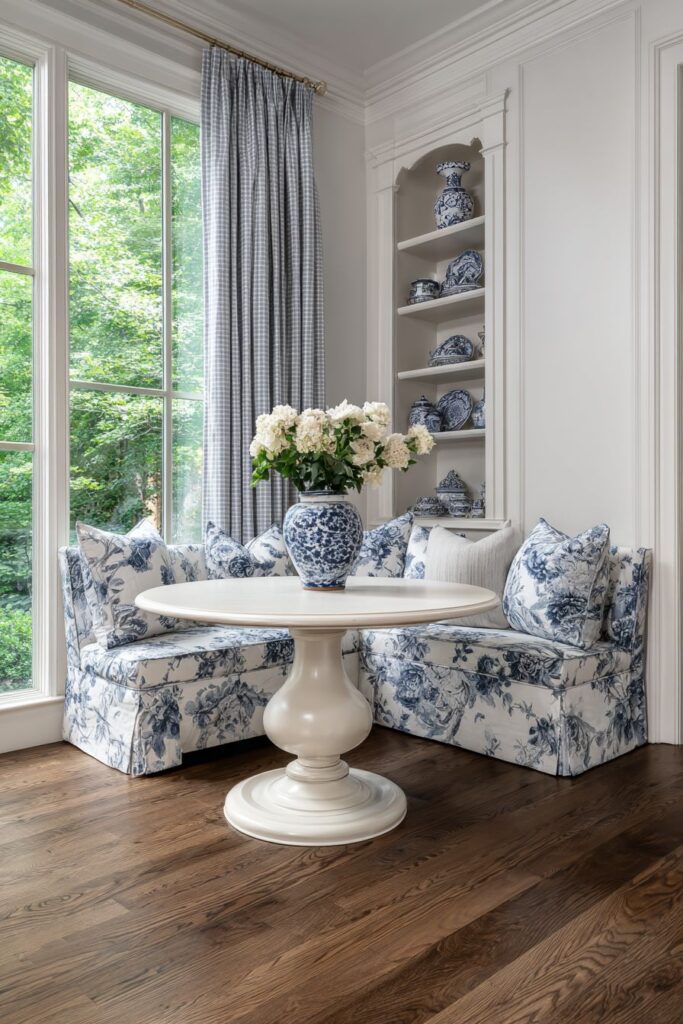
The refectory-style long dining table in solid oak designed to accommodate large family gatherings represents the European monastic tradition of communal dining, where substantial construction and generous proportions create furniture capable of serving multiple generations. Bench seating on one side balances individual chairs on the other, providing flexible accommodation that can adapt to varying numbers of diners while maintaining the authentic character of traditional European design.
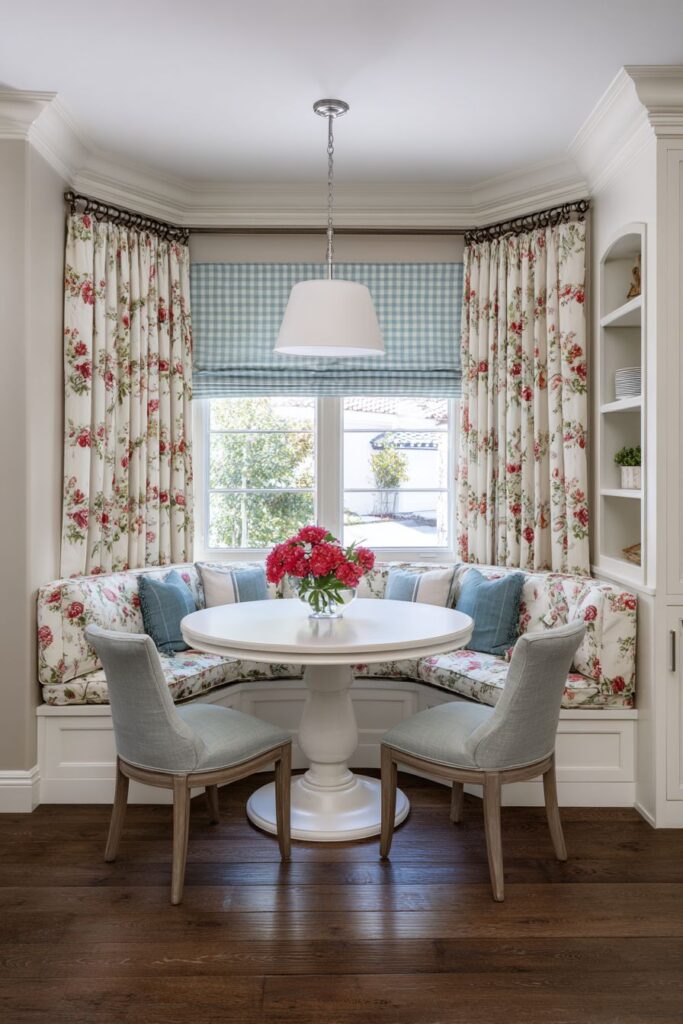
The large wooden armoire stores linens and serving pieces while adding architectural presence that enhances the room’s traditional character and provides essential storage for entertaining necessities. Exposed stone walls and heavy wooden ceiling beams create rustic traditional ambiance that connects the interior space with its historical precedents while adding textural interest that modern construction techniques cannot replicate.
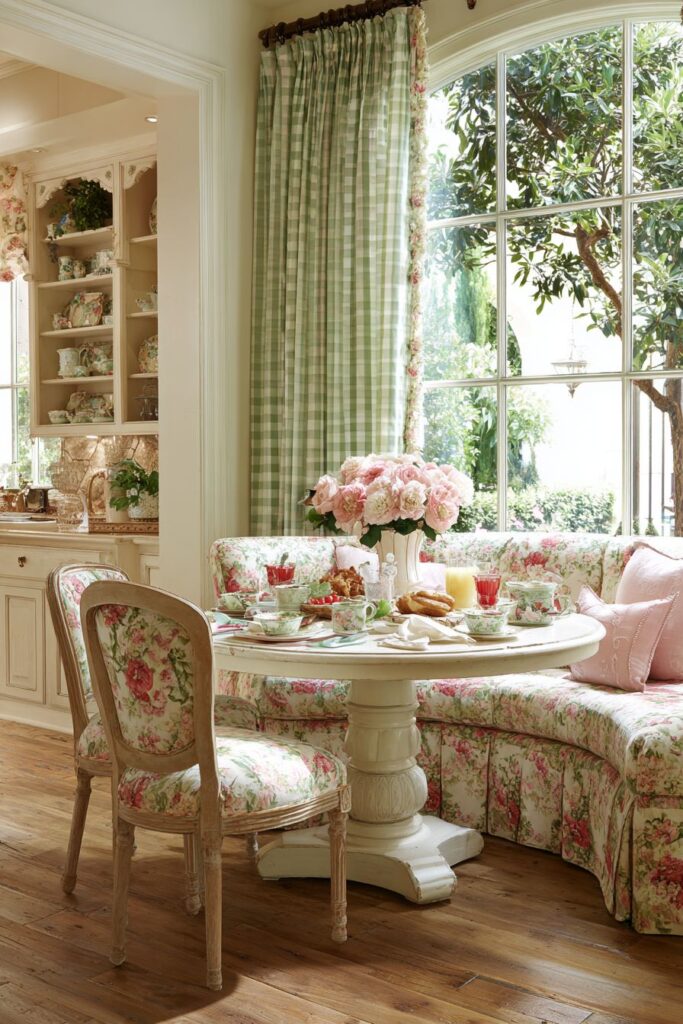
Wide-angle photography captures the generous proportions and timeless European traditional influence that makes this space suitable for both daily family meals and special celebrations. The combination of substantial furniture pieces and authentic architectural elements creates an environment that feels both grand and welcoming, demonstrating how traditional design can successfully accommodate contemporary lifestyle requirements.
This approach to traditional dining design celebrates the European heritage that forms much of the foundation for American traditional style while adapting these influences to contemporary needs and preferences. The emphasis on solid construction and natural materials ensures these spaces will remain beautiful and functional for generations.
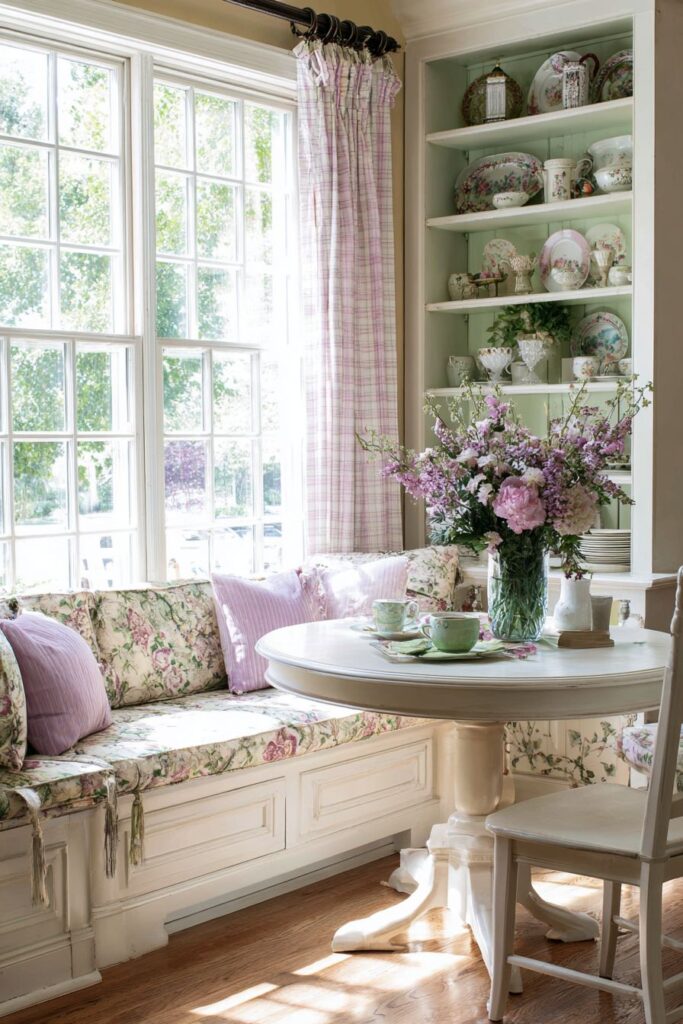
Key Design Tips:
- Choose refectory tables for European traditional authenticity and generous seating
- Mix bench and individual chair seating for flexible dining accommodation
- Use large armoires for substantial storage and architectural presence
- Expose structural elements like stone walls and ceiling beams when available
- Emphasize solid wood construction and natural materials throughout
15. Breakfast Nook Chintz Cottage Charm
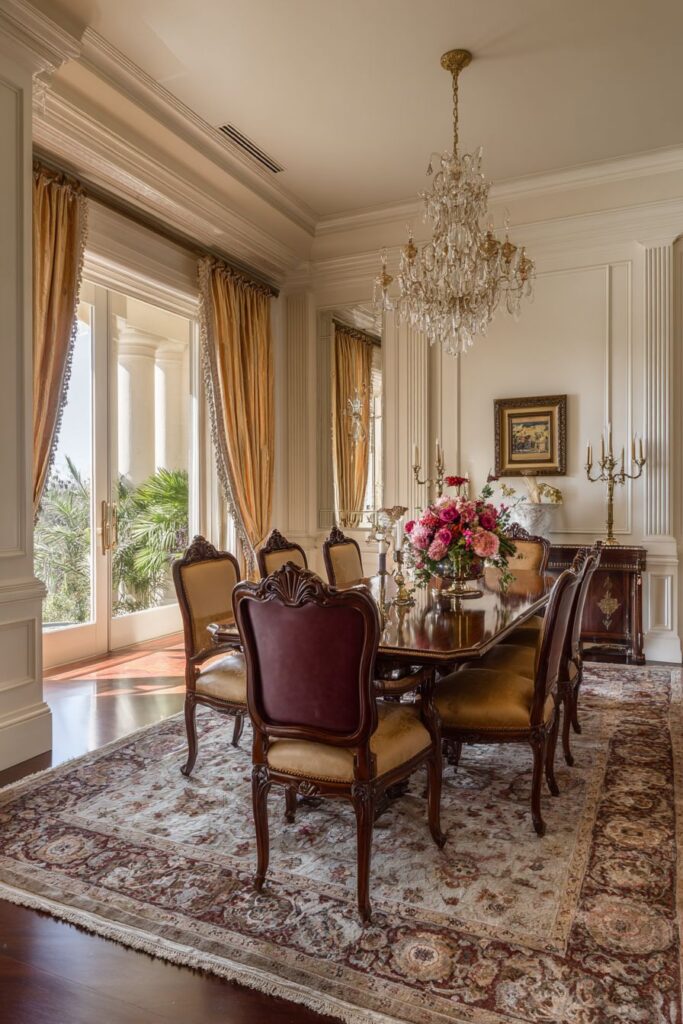
The breakfast nook with built-in banquette seating upholstered in traditional chintz fabric with floral motifs creates intimate dining experiences that celebrate the cottage tradition of combining beauty with practicality in smaller spaces. The round pedestal table in painted white finish creates casual elegance that works equally well for morning coffee or afternoon tea while maintaining the traditional styling that connects this space with its historical precedents.

Open shelving displays transferware and vintage linens, creating storage solutions that double as decorative displays while keeping everyday items within easy reach. This approach reflects the cottage tradition of using beautiful objects in daily life rather than reserving them solely for special occasions. Gingham café curtains frame the window while allowing natural light to illuminate the cozy traditional setting.
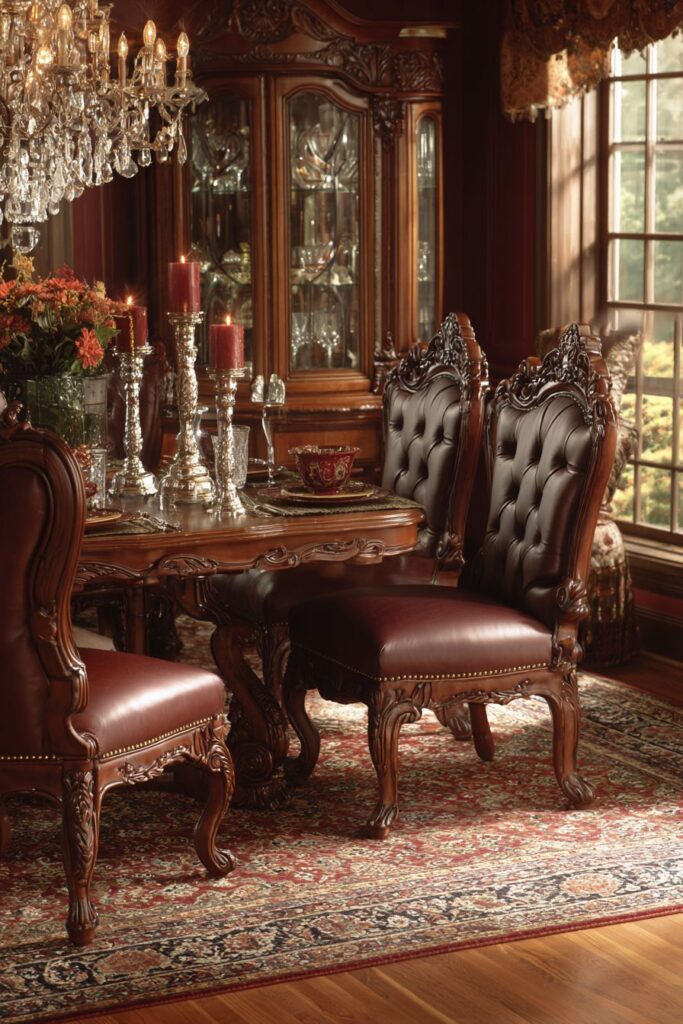
The floral chintz upholstery introduces pattern and color that creates visual interest while maintaining the soft, feminine aesthetic characteristic of cottage style decorating. The combination of built-in seating and round table maximizes functionality in a compact space while creating an intimate atmosphere that encourages lingering conversations over meals.
Interior design photography captures the charming informal traditional dining experience that makes this type of space ideal for casual meals and intimate gatherings. The layering of patterns, textures, and natural light creates visual complexity that keeps the space interesting while maintaining the comfort and welcome essential to successful traditional design.
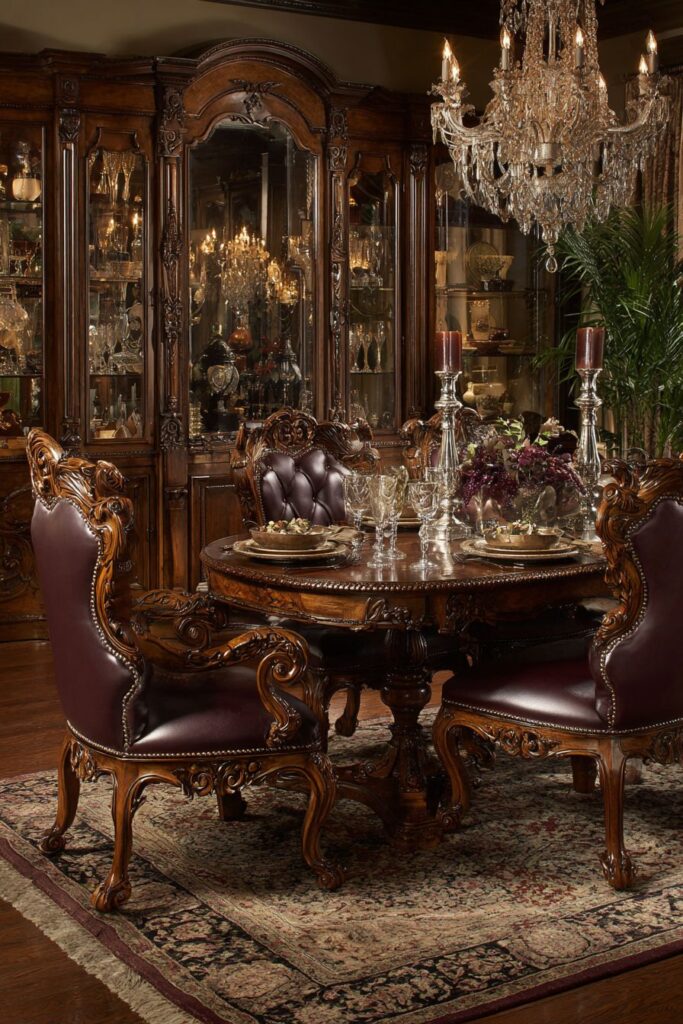
Key Design Tips:
- Use chintz fabrics with floral motifs for authentic cottage traditional styling
- Choose round pedestal tables for intimate seating in smaller spaces
- Display transferware on open shelving for cottage charm and accessibility
- Add gingham curtains for traditional country window treatments
- Paint furniture in white or cream for casual cottage elegance
16. Chippendale Mahogany Ornate Sophistication
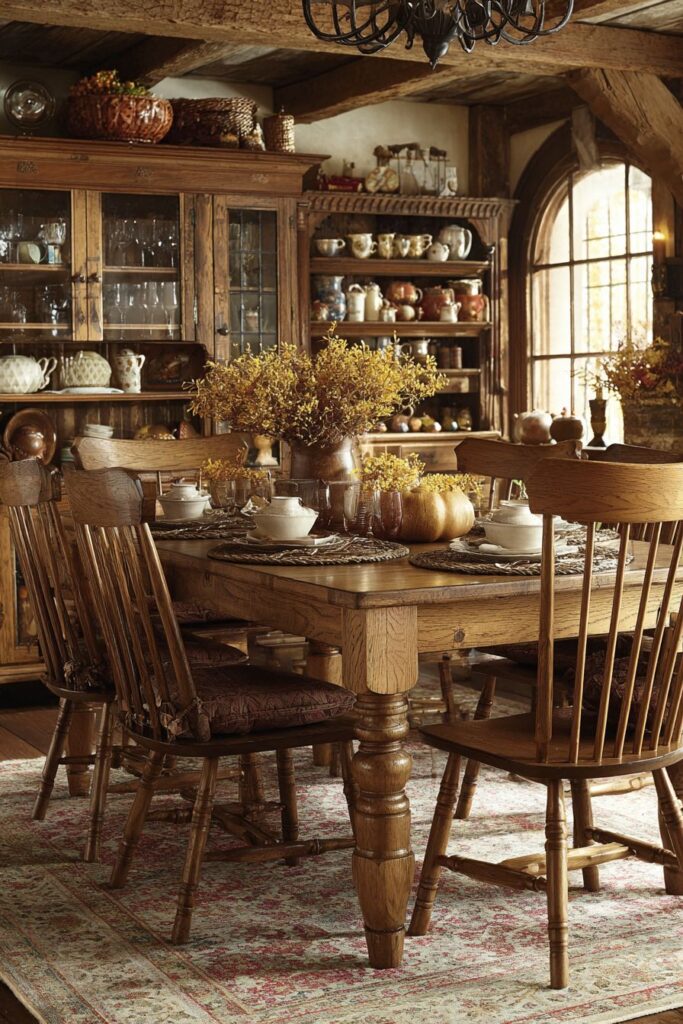
The Chippendale-style dining set featuring ornate carved chairs with intricate back details and matching table with ball-and-claw feet represents the pinnacle of 18th-century furniture craftsmanship, where English design influences created some of the most sophisticated seating ever produced. Rich mahogany wood complemented by burgundy leather upholstery with brass nailheads creates a color scheme that speaks to traditional luxury while providing durable, comfortable seating for extended entertaining sessions.
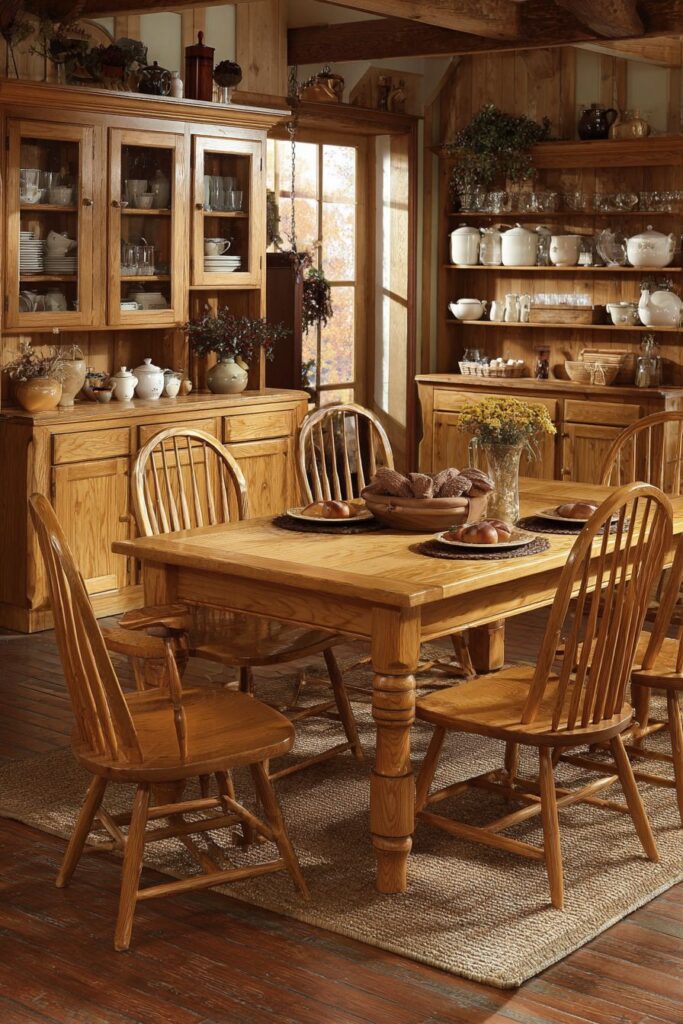
The traditional Oriental rug grounds the formal seating arrangement while adding pattern and color that complements the rich wood tones without competing for visual attention. Crystal chandelier and silver candelabras complete the elegant traditional setting, providing multiple layers of lighting that create the warm, flattering illumination essential for formal dining experiences.
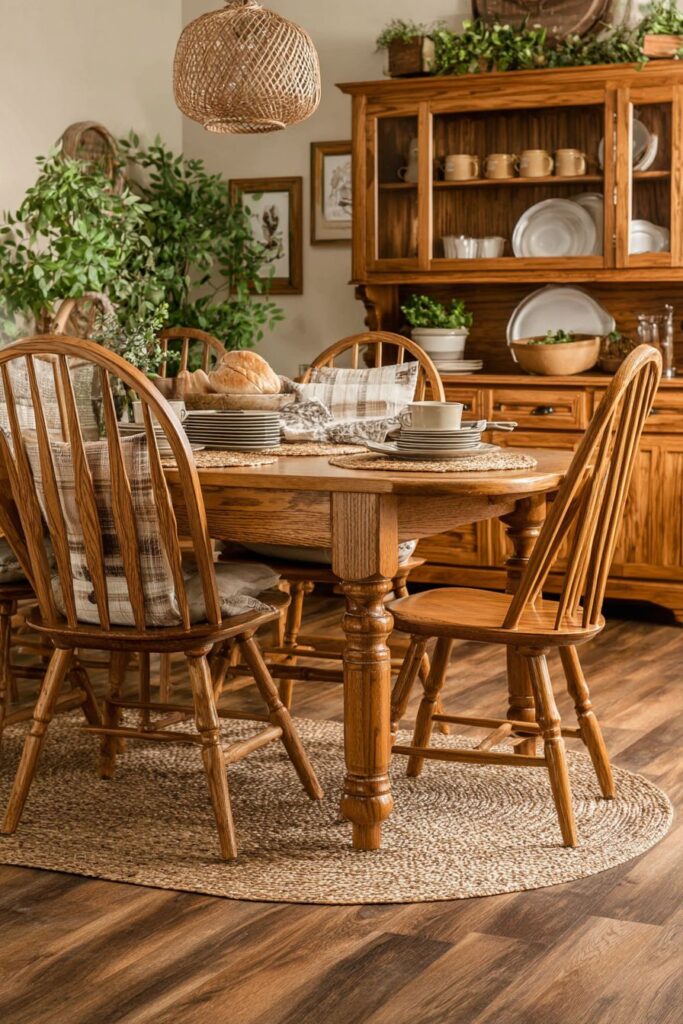
Professional photography emphasizes the sophisticated traditional craftsmanship and formal dining elegance that makes Chippendale furniture suitable for the most special occasions while maintaining timeless appeal that ensures continued relevance. The intricate carving details and ball-and-claw feet demonstrate the high level of craftsmanship that distinguished 18th-century furniture making.
This approach to traditional dining room design celebrates the English heritage that significantly influenced American traditional style while creating spaces that feel both grand and welcoming. The emphasis on quality materials, sophisticated construction techniques, and classical proportions ensures these pieces will remain beautiful and valuable for generations.
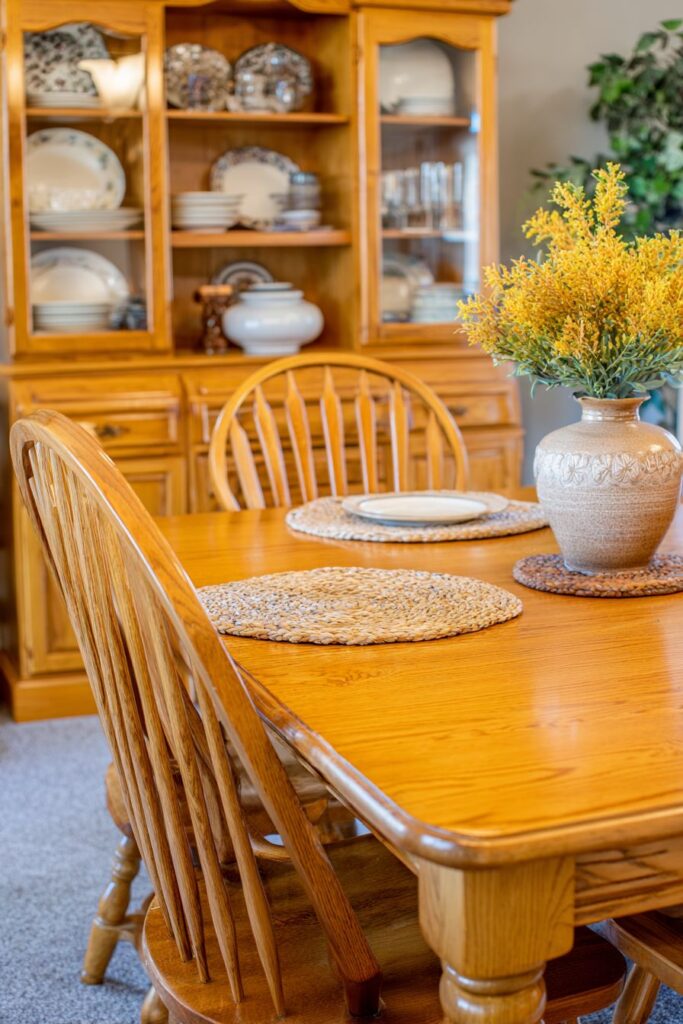
Key Design Tips:
- Select Chippendale furniture for authentic 18th-century English elegance
- Use burgundy leather upholstery for traditional luxury and durability
- Choose Oriental rugs to complement formal mahogany furniture pieces
- Add crystal chandeliers for sophisticated formal dining illumination
- Emphasize intricate carving details through careful furniture placement and lighting
17. Captain’s Chair Honey Oak Durability
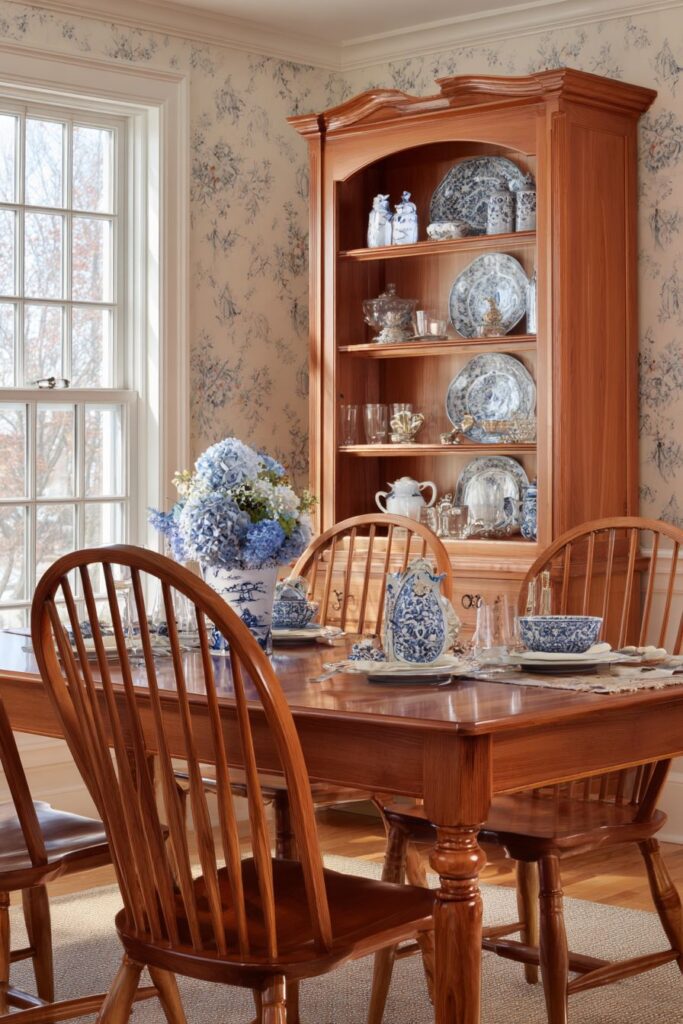
The captain’s chair dining set with spindle backs and solid wood construction in honey oak finish celebrates the American tradition of building furniture for durability and comfort rather than mere decorative display. The simple rectangular table features breadboard ends and sturdy turned legs that demonstrate honest construction techniques designed to withstand generations of daily use while maintaining their structural integrity and visual appeal.
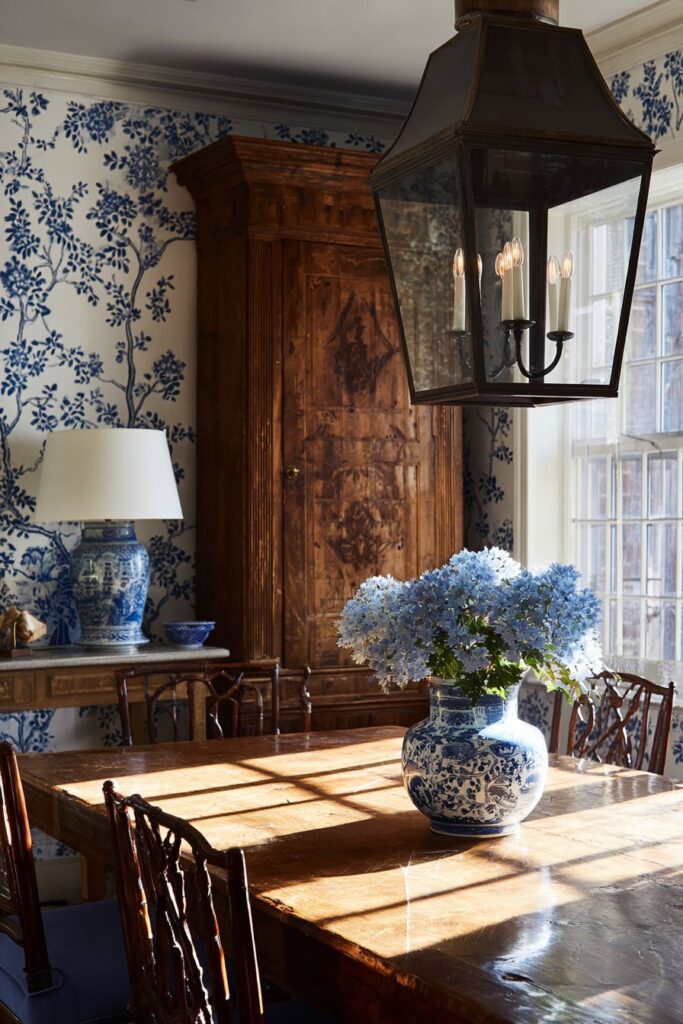
Traditional braided placemats and pottery dishes create casual table settings that reflect the democratic nature of American traditional design, where beauty emerges from function rather than applied ornamentation. The wooden hutch displays everyday china and glassware, providing both storage and display opportunities while keeping frequently used items within convenient reach.
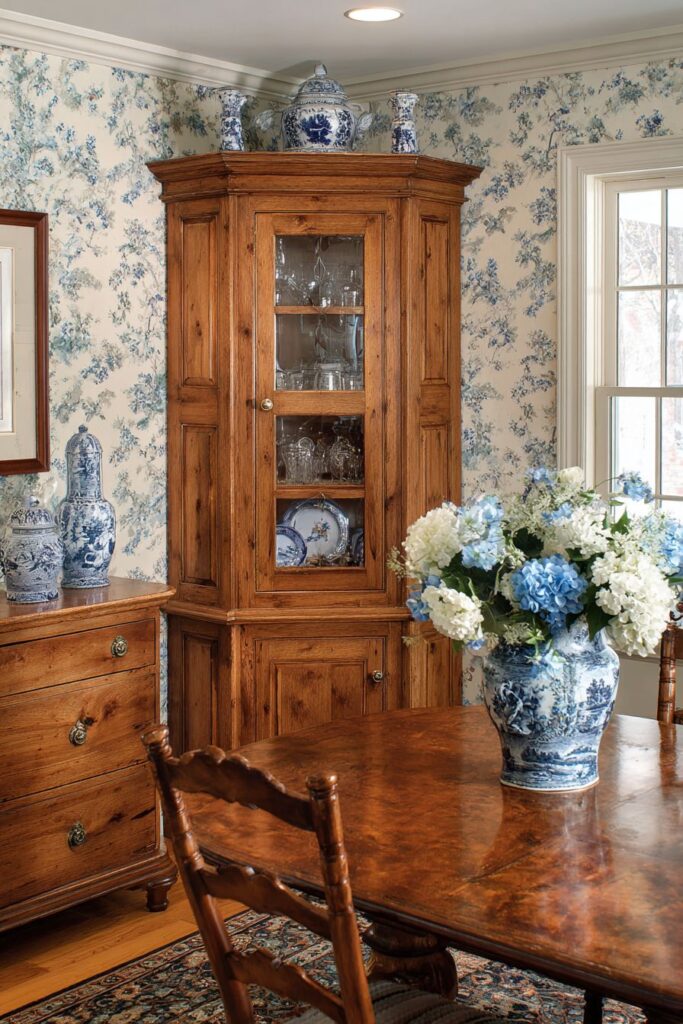
Interior photography captures the authentic American traditional style with emphasis on durable, functional furniture and comfortable family dining that prioritizes livability over formal elegance. The honey oak finish adds warmth and natural beauty while the sturdy construction ensures these pieces will serve multiple generations of family meals and gatherings.
This approach to traditional dining design celebrates the practical nature of American furniture making, where craftsmen created pieces designed to serve real families with real needs rather than merely impressing guests with expensive materials or elaborate construction techniques.
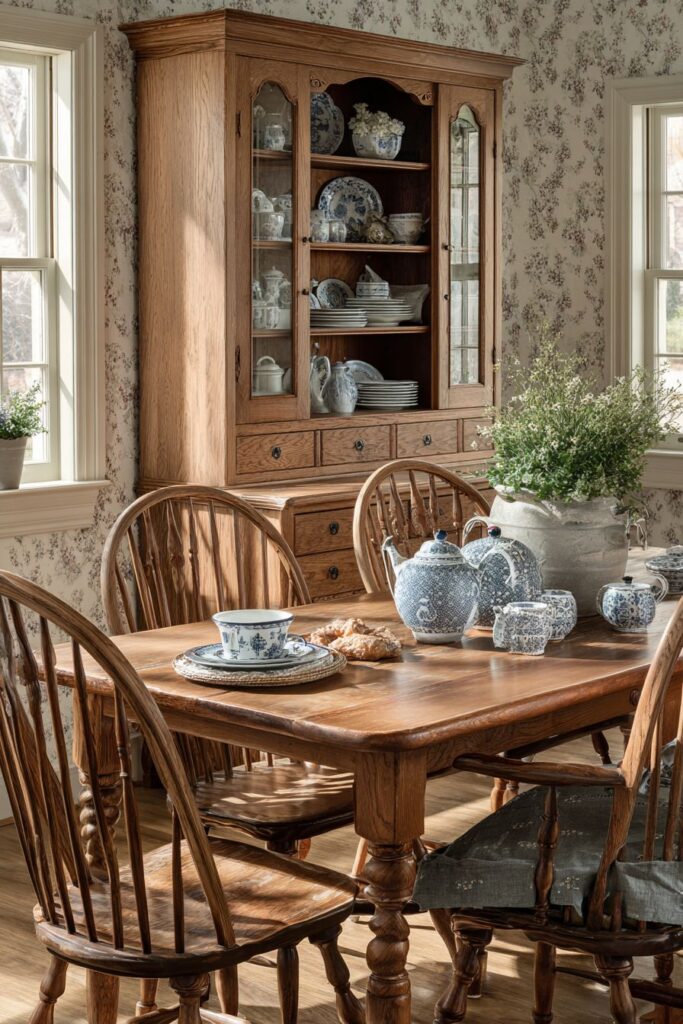
Key Design Tips:
- Choose captain’s chairs for comfortable, durable traditional seating
- Use honey oak finishes for warm, natural wood beauty
- Select tables with breadboard ends for authentic traditional construction
- Display everyday china in hutches for convenient access and storage
- Add braided placemats for casual traditional table setting options
18. Gate-Leg Cherry Hitchcock Chair Heritage
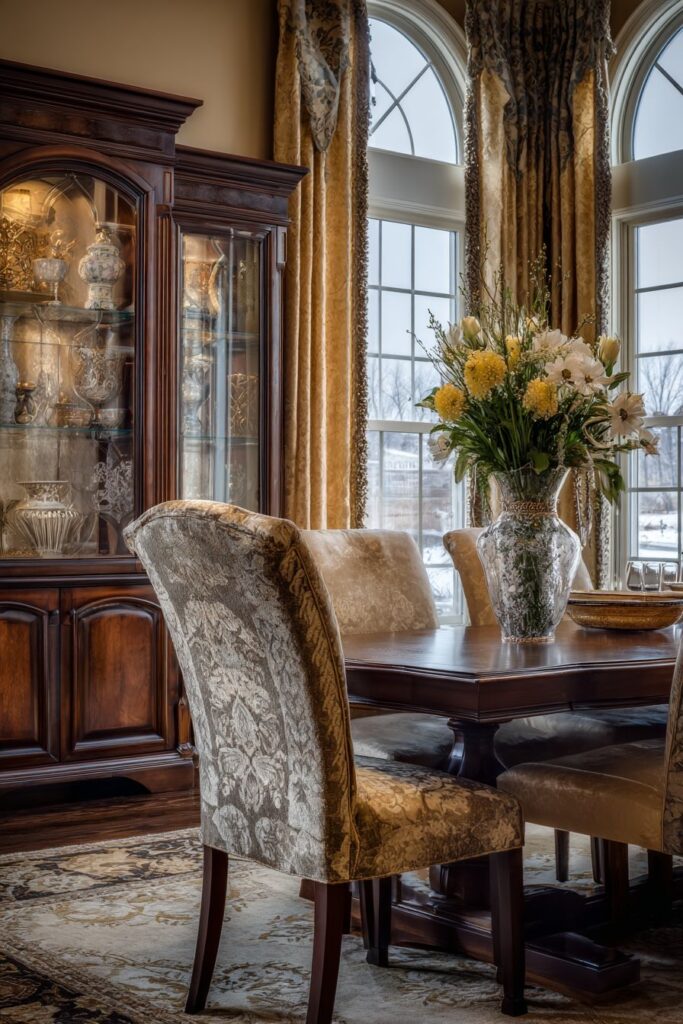
The gate-leg table in cherry wood that extends for entertaining paired with Hitchcock chairs featuring hand-painted details and rush seats represents the marriage of practicality and artistry that characterizes the best of American traditional furniture design. The tall corner cabinet displays blue willow china and pewter accessories, creating storage solutions that celebrate beautiful objects while keeping them protected and organized.
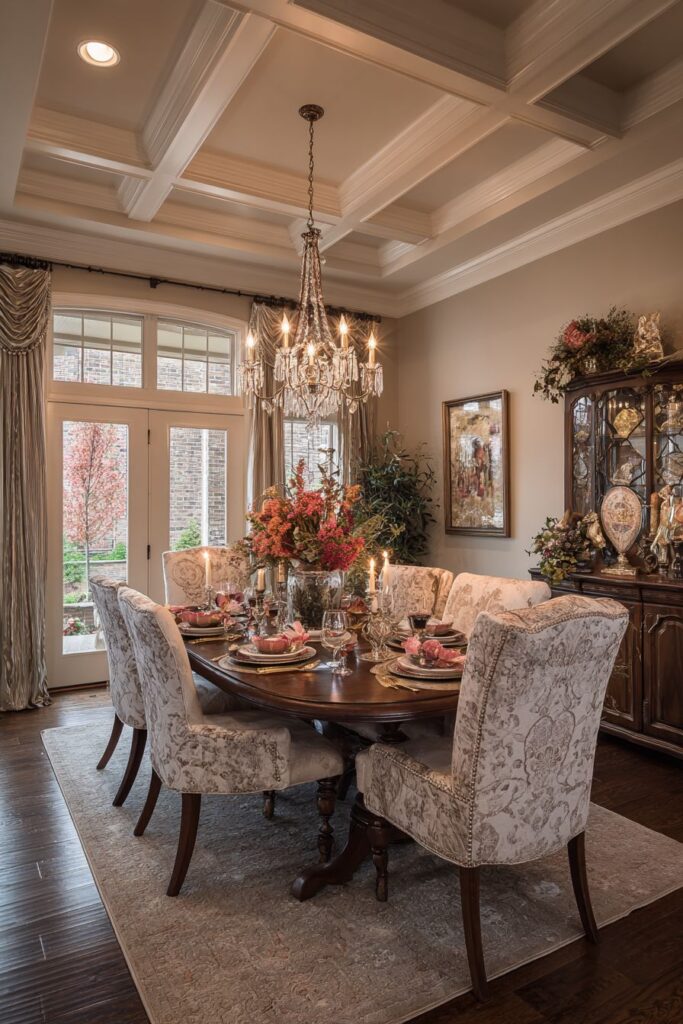
Traditional patterned wallpaper in soft florals complements the wood tones while adding visual interest and pattern that creates warmth without overwhelming the space’s other elements. Natural lighting through divided-light windows creates gentle shadows that highlight the traditional craftsmanship and painted furniture details that make each piece unique and special.
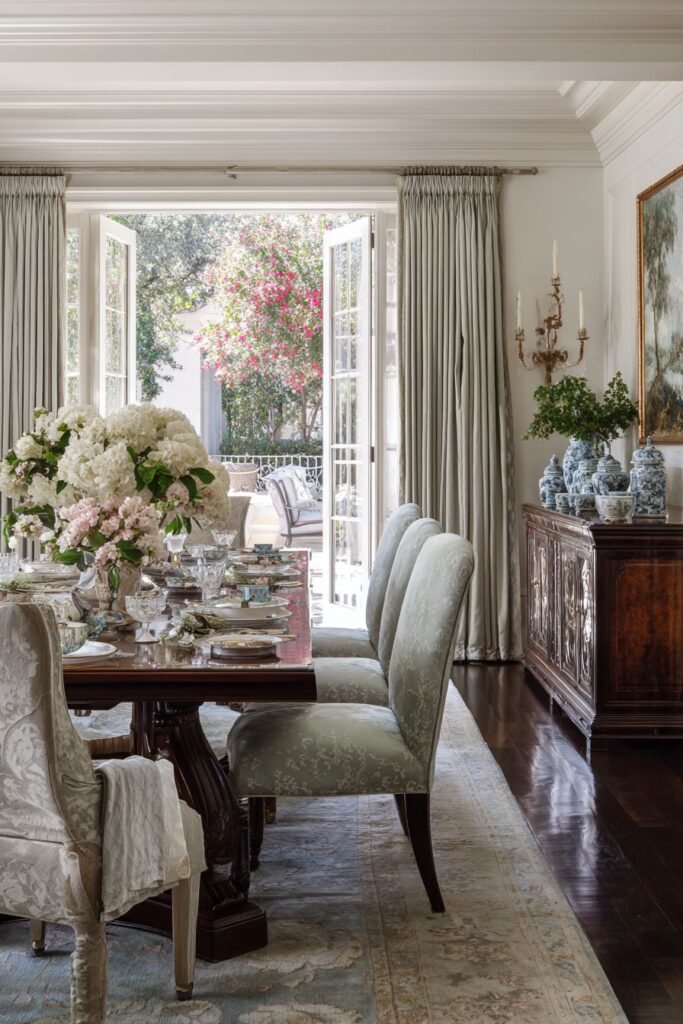
The combination of expandable table functionality with decorative chair details demonstrates how traditional design successfully balances practical needs with aesthetic preferences, creating furniture that serves daily family life while adding beauty and character to the home environment. The hand-painted chair details reflect the American tradition of adding personal touches that make mass-produced items feel special and individualized.
This approach to traditional dining design celebrates the heritage of American decorative arts while creating spaces that remain functional and beautiful for contemporary families. The emphasis on handcrafted details and personal touches ensures these spaces feel warm and welcoming rather than cold or museum-like.
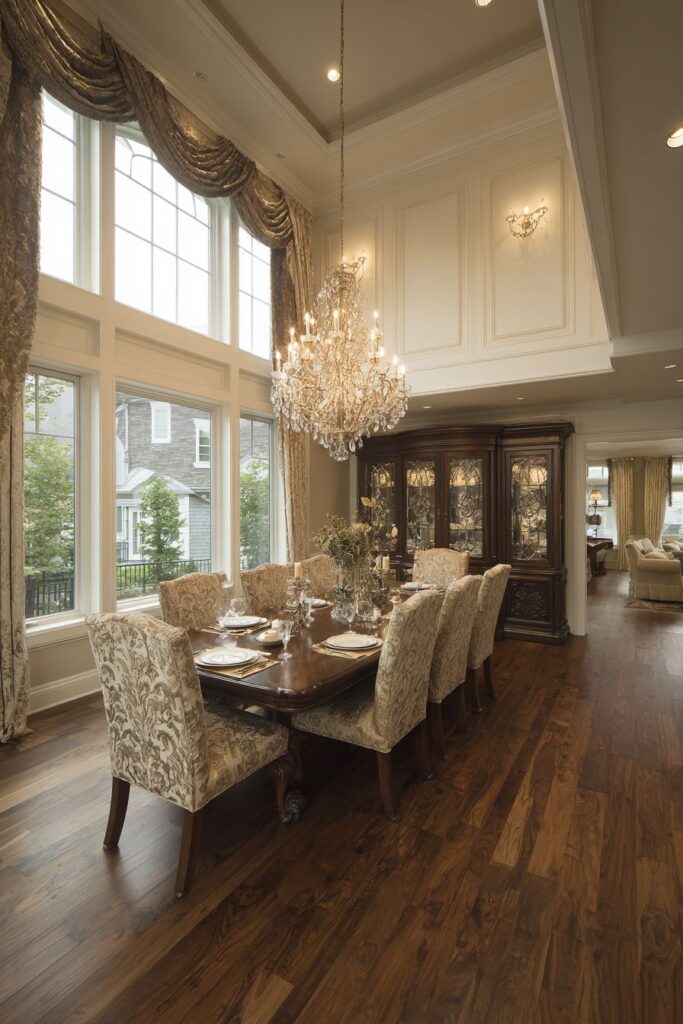
Key Design Tips:
- Use gate-leg tables for flexible entertaining and space-efficient storage
- Choose Hitchcock chairs for authentic American traditional seating with decorative details
- Display blue willow china collections for traditional American collecting heritage
- Add floral wallpaper patterns for warmth and traditional visual interest
- Maximize natural lighting through divided-light traditional window styles
19. Double Pedestal Walnut Formal Sophistication
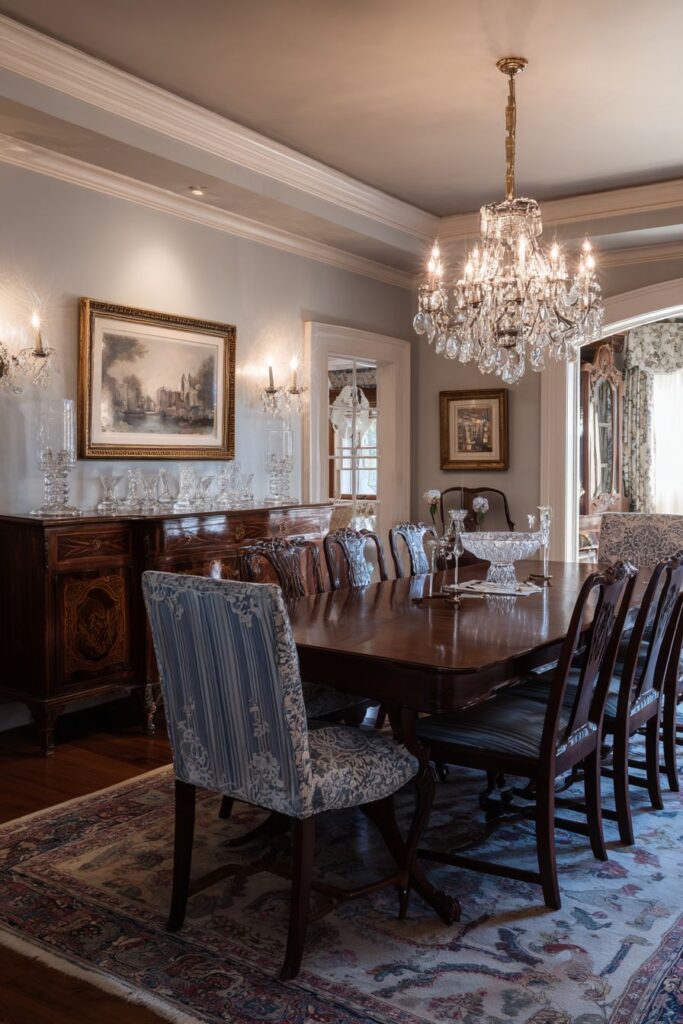
The formal dining table with double pedestal base in rich walnut surrounded by upholstered parsons chairs in traditional damask fabric creates a sophisticated entertaining environment where classical proportions and quality materials combine to create lasting beauty. The matching china cabinet with leaded glass doors displays fine porcelain collections while providing essential storage for entertaining necessities and treasured family pieces.
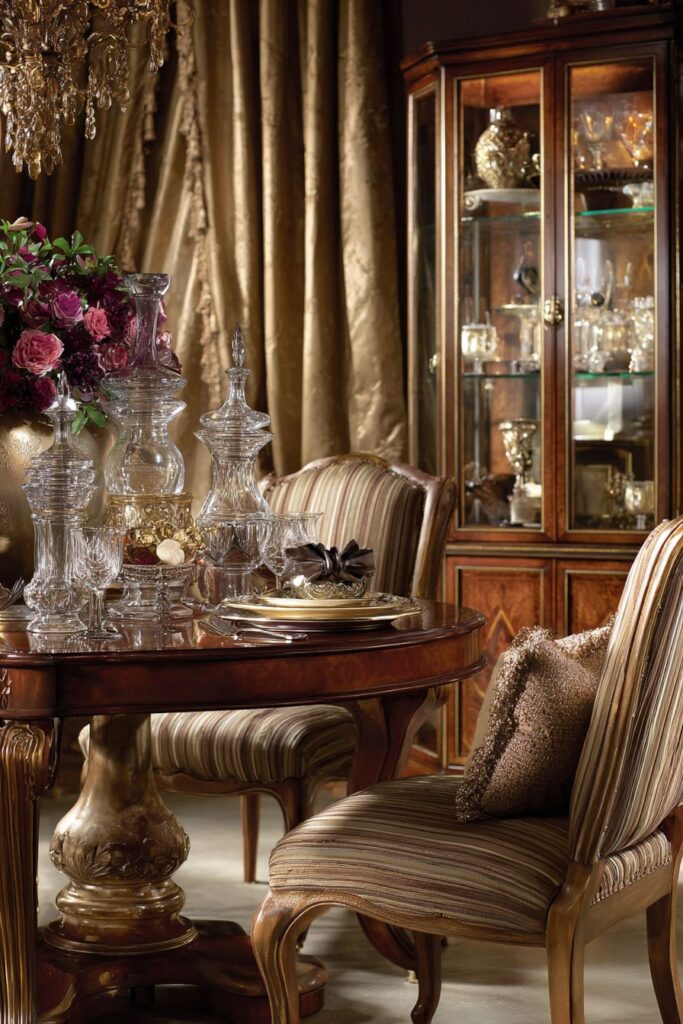
Traditional swag draperies in coordinating fabric frame tall windows while maintaining the formal atmosphere essential to elegant entertaining spaces. Professional interior photography with balanced lighting captures the formal traditional elegance and sophisticated color harmony throughout the space, demonstrating how careful attention to proportion, scale, and material quality creates dining rooms suitable for the most special occasions.
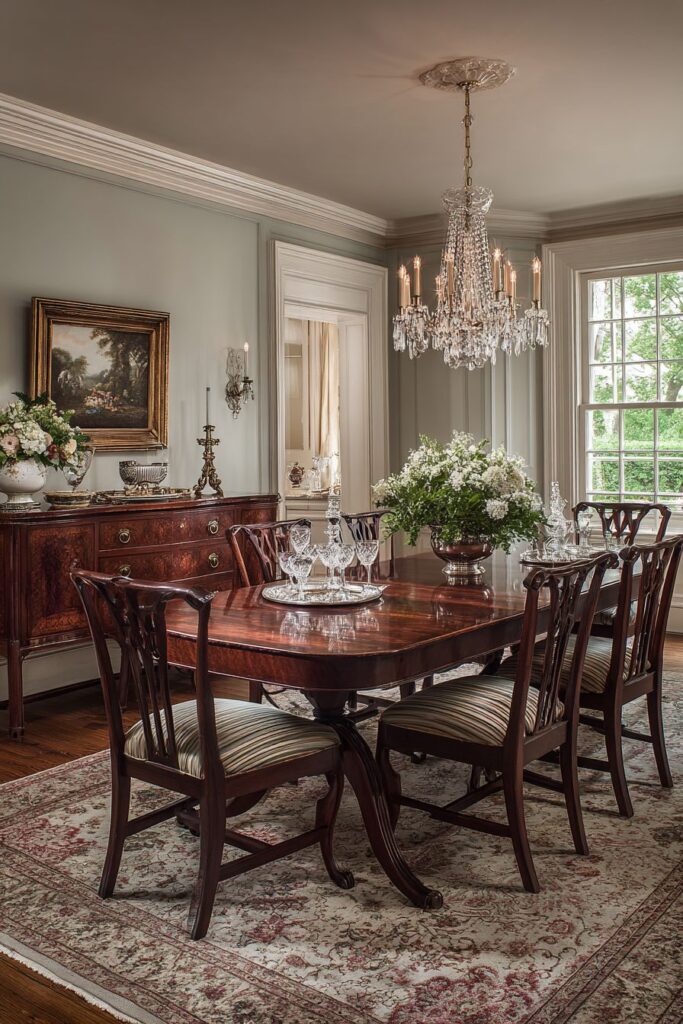
The double pedestal base provides exceptional stability while creating visual interest through its substantial presence and classical proportions. The walnut wood grain adds natural beauty and depth that improves with age while the parsons chair styling provides comfortable seating that works equally well for extended entertaining sessions and daily family meals.
This approach to formal traditional dining design emphasizes quality over quantity, investing in pieces that will remain beautiful and functional for generations while creating environments that make every dining occasion feel special and memorable. The sophisticated color coordination and careful attention to lighting ensure the space photographs beautifully while remaining comfortable and functional for everyday use.
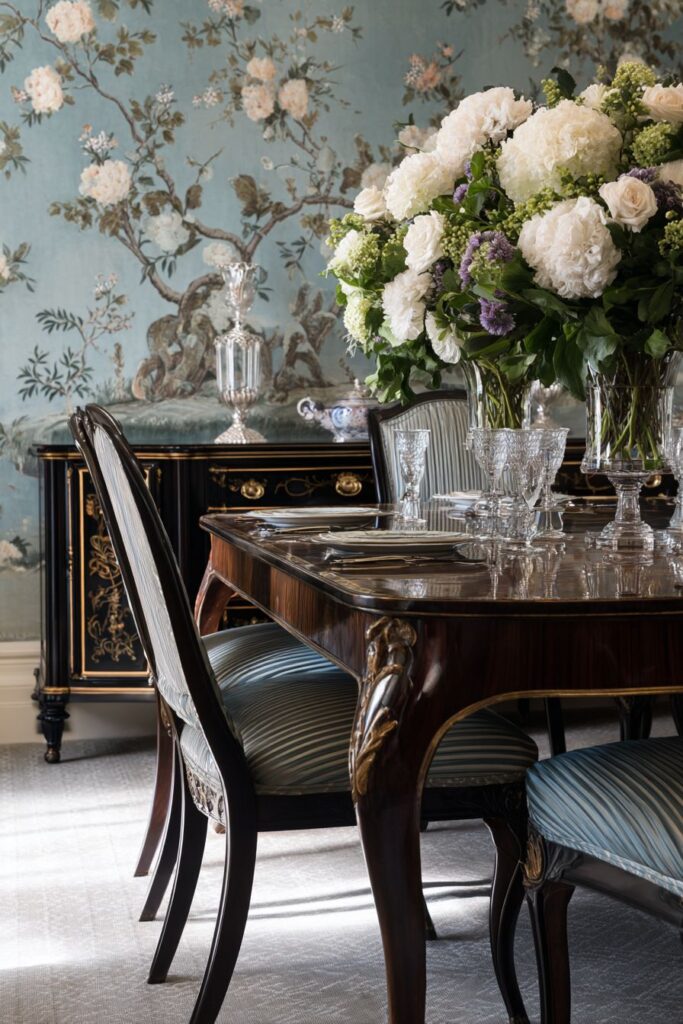
Key Design Tips:
- Select double pedestal tables for formal stability and classical proportions
- Use parsons chairs with damask upholstery for sophisticated traditional seating
- Choose matching china cabinets with leaded glass for elegant storage and display
- Add swag draperies for formal window treatments and traditional elegance
- Emphasize rich walnut wood grain through proper lighting and furniture placement
20. Farmhouse Trestle Chestnut Authentic Character
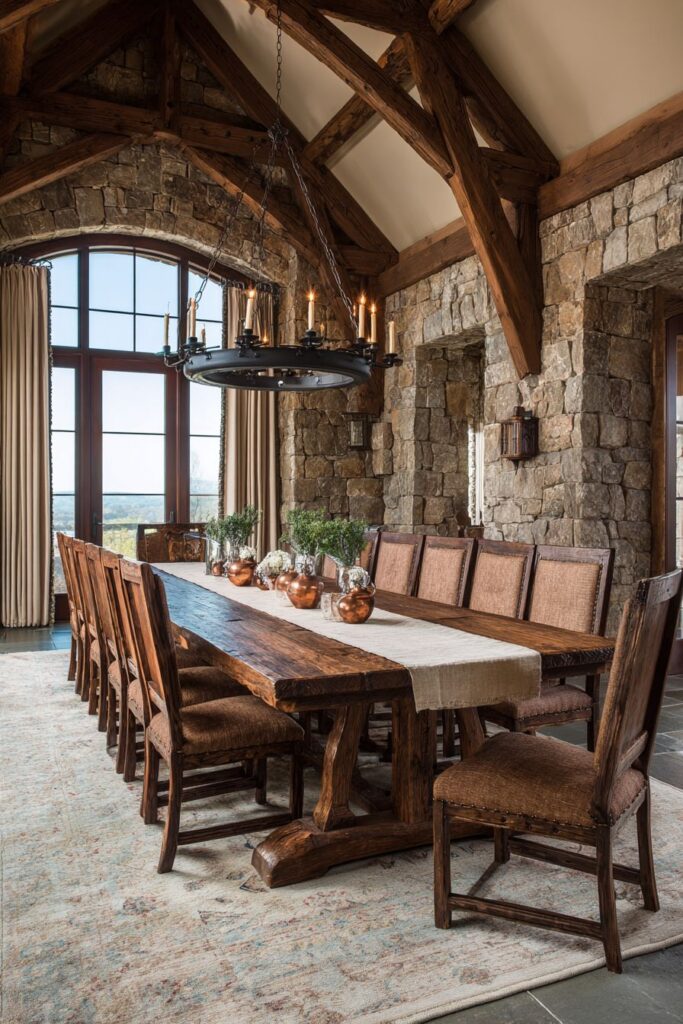
The farmhouse trestle table in reclaimed chestnut wood showing natural character marks and grain patterns represents the ultimate expression of authentic traditional design, where the material’s history becomes part of its beauty and appeal. Mix-and-match vintage chairs in complementary wood finishes create an authentic collected look that reflects the gradual accumulation of meaningful pieces rather than suite purchasing decisions.
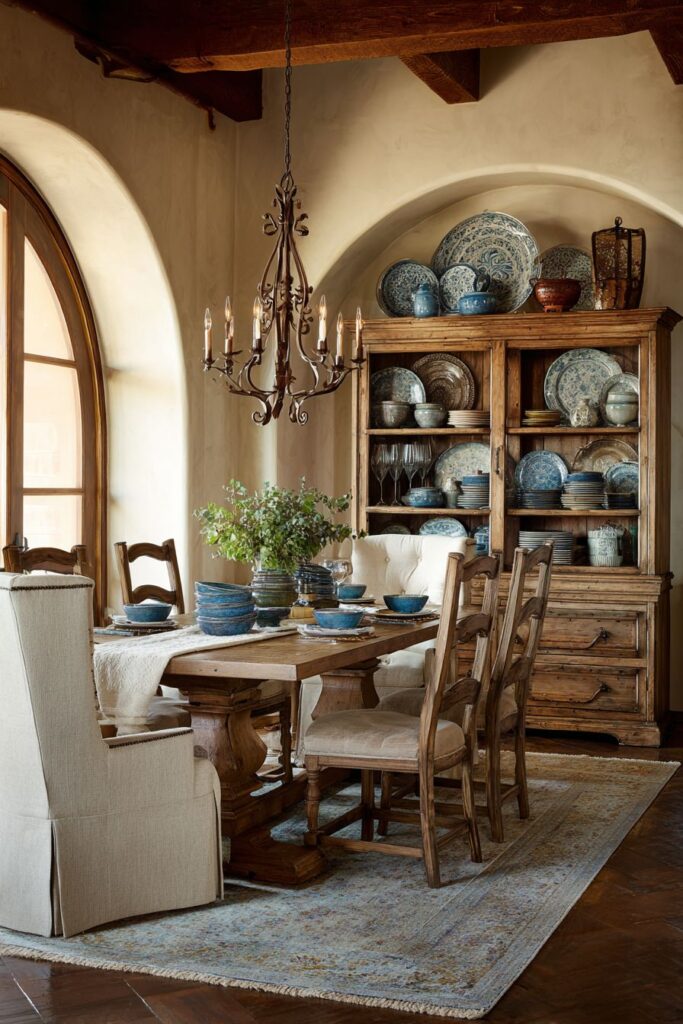
The traditional Welsh dresser displays ironstone dishes and copper serving pieces while providing substantial storage and creating opportunities to showcase collections that reflect personal taste and family heritage. Hand-forged iron chandelier and natural linen table runner complete the rustic traditional aesthetic while adding elements that connect the space with its artisanal heritage.
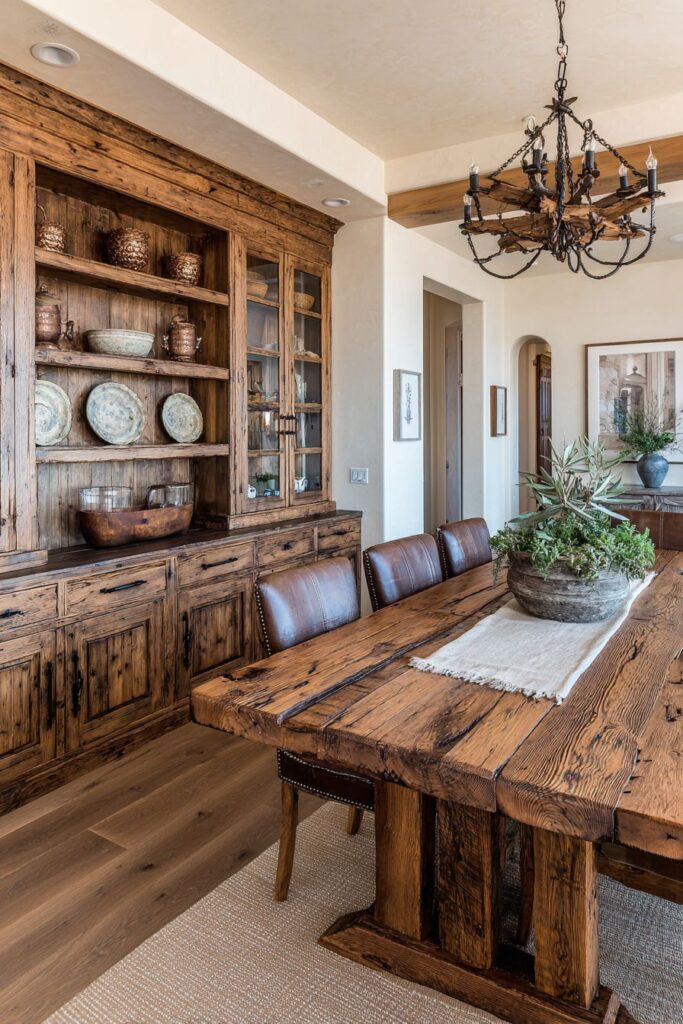
Wide-angle photography emphasizes the authentic materials and timeless traditional country dining atmosphere that makes this space suitable for both daily family meals and special celebrations. The natural character marks in the reclaimed wood tell stories of previous use while adding visual interest that cannot be artificially created.
This approach to traditional dining design celebrates the beauty of honest materials and time-tested construction techniques while creating spaces that feel both sophisticated and approachable. The emphasis on authentic materials and handcrafted details ensures these dining rooms will remain beautiful and relevant for generations while providing comfortable, functional spaces for contemporary family life.
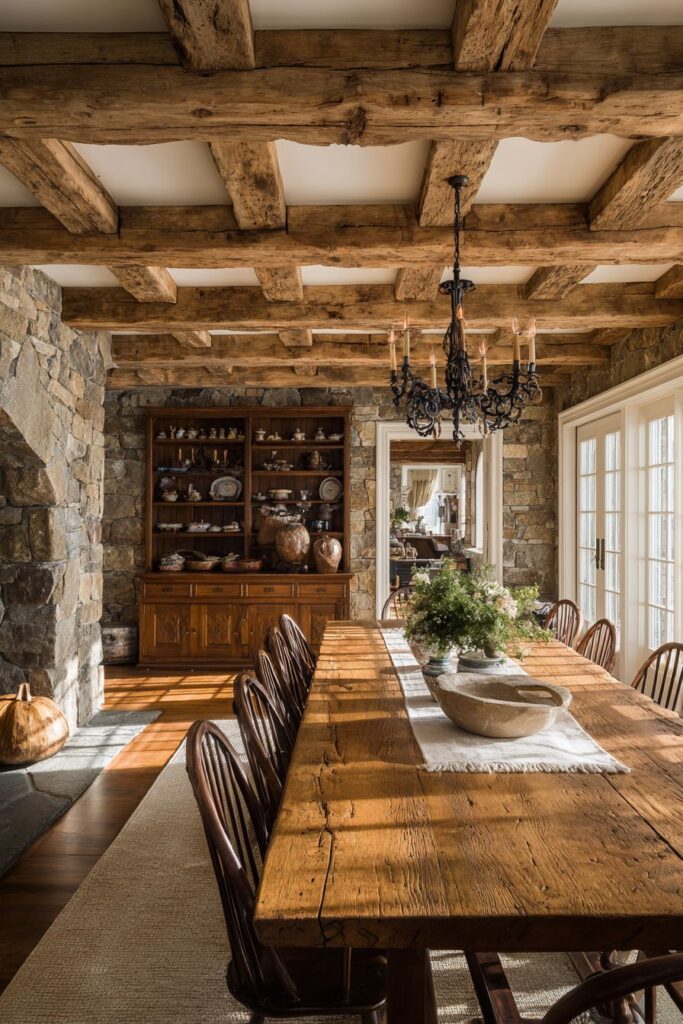
Key Design Tips:
- Choose reclaimed chestnut wood for authentic character and natural beauty
- Mix vintage chairs in complementary finishes for collected-over-time authenticity
- Use Welsh dressers for substantial traditional storage and display opportunities
- Add hand-forged iron lighting for artisanal traditional metalwork
- Include natural linen textiles for authentic country traditional styling
Conclusion
These twenty traditional dining room designs demonstrate the remarkable versatility and enduring appeal of classic interior design principles, where quality materials, thoughtful proportions, and time-tested construction techniques create spaces that remain beautiful and functional across generations. From formal entertaining environments featuring museum-quality antiques to cozy family gathering spaces with rustic charm, traditional design offers solutions for every lifestyle while maintaining the sophisticated aesthetic that makes dining experiences special and memorable.
The key to successful traditional dining room design lies in understanding the balance between formality and comfort, where spaces feel elegant enough for special occasions while remaining welcoming enough for daily family life. By investing in quality pieces, embracing natural materials, and paying attention to the details that create authentic character, homeowners can create dining rooms that serve as both functional spaces and artistic statements that reflect personal taste and family heritage.
Whether drawn to the refined elegance of Federal period furniture, the rustic charm of farmhouse styling, or the sophisticated comfort of English traditional influences, these design concepts provide inspiration for creating dining rooms that celebrate the art of gracious living while meeting the practical needs of contemporary families. The timeless appeal of traditional design ensures these spaces will remain beautiful and relevant for generations, making them worthy investments in both aesthetic pleasure and functional value.

